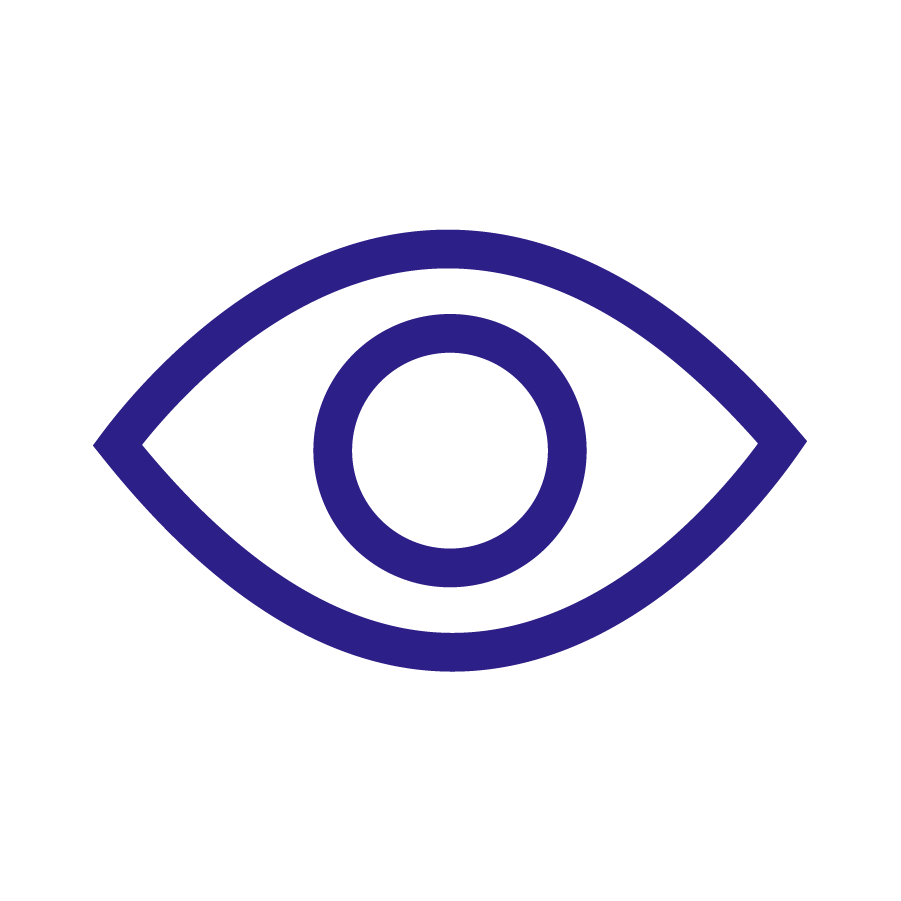Soveltamisala
Suomenkielistä soveltamisalaa ei ole saatavissa.
1.1 Scope of EN 1999-1-5
(1) EN 1999-1-5 applies to the structural design of aluminium structures, stiffened and unstiffened, that have the form of a shell of revolution or of a round panel in monocoque structures.
(2) EN 1999-1-5 covers additional provisions to those given in the relevant parts of EN 1999 for design of aluminium structures.
NOTE Supplementary information for certain types of shells is given in EN 1993-1-6 and the relevant application parts of EN 1993 which include:
- Part 3-1 for towers and masts;
- Part 3-2 for chimneys;
- Part 4-1 for silos;
- Part 4-2 for tanks;
- Part 4-3 for pipelines.
(4) The provisions in EN 1999-1-5 apply to axisymmetric shells (cylinders, cones, spheres) and associated circular or annular plates, beam section rings and stringer stiffeners, where they form part of the complete structure.
(5) Single shell panels (cylindrical, conical or spherical) are not explicitly covered by EN 1999-1-5. However, the provisions can be applicable if the appropriate boundary conditions are duly taken into account.
(6) Types of shell walls covered in EN 1999-1-5 can be (see Figure 1.1):
- shell wall constructed from flat rolled sheet with adjacent plates connected with butt welds, termed “isotropic”;
- shell wall with lap joints formed by connecting adjacent plates with overlapping sections, termed “lap-jointed”;
- shell wall with stiffeners attached to the outside, termed “externally stiffened” irrespective of the spacing of stiffeners;
- shell wall with the corrugations running up the meridian, termed “axially corrugated”;
- shell wall constructed from corrugated sheets with the corrugations running around the shell circumference, termed “circumferentially corrugated”.
[Figure 1.1 - Illustration of cylindrical shell form]
(7) The provisions of EN 1999-1-5 are intended to be applied within the temperature range defined in EN 1999-1-1. The maximum temperature is restricted so that the influence of creep can be neglected. For structures subject to elevated temperatures associated with fire, see EN 1999-1-2.
(8) EN 1999-1-5 does not cover the aspect of leakage.
1.2 Assumptions
(1) The general assumptions of EN 1990 apply.
(2) The provisions of EN 1999-1-1 apply.
(3) The design procedures are valid only when the requirements for execution in EN 1090-3 or other equivalent requirements are complied with.
(4) For the design of new structures, EN 1999 is intended to be used, for direct application, together with EN 1990, EN 1991, EN 1992, EN 1993, EN 1994, EN 1995, EN 1997 and EN 1998.
(5) EN 1999 is intended to be used in conjunction with:
- European Standards for construction products relevant for aluminium structures;
- EN 1090-1, Execution of steel structures and aluminium structures - Part 1: Requirements for conformity assessment of structural components;
- EN 1090-3, Execution of steel structures and aluminium structures - Part 3: Technical requirements for aluminium structures.
Tämän julkaisun valmistelusta Suomessa vastaa Metalliteollisuuden Standardisointiyhdistys ry, puh. 09 19 231 (vaihde).
Sidokset
ewogICJMYW5nLlNob3dNb3JlVGVybXMiIDogIk7DpHl0w6QgbGlzw6TDpCBoYWt1ZWh0b2phIiwKICAiTGFuZy5PbGRVc2VybmFtZVdyb25nIiA6ICJWYW5oYSBrw6R5dHTDpGrDpHR1bm51cyBvbiB2w6TDpHJpbi4iLAogICJMYW5nLldhaXRpbmciIDogIk9kb3R0YWEgdmFodmlzdHVzdGEiLAogICJMYW5nLlBhc3N3b3JkVGlwIiA6ICJTYWxhc2FuYXZpaGplIiwKICAiTGFuZy5Db250aW51ZVRvRnJvbnRwYWdlIiA6ICJKYXRrYSBldHVzaXZ1bGxlIiwKICAiTGFuZy5BY3RpdmF0aW9uTGlua1NlbnQiIDogIkvDpHl0dMOkasOkdGlsaW4gYWt0aXZvaW50aWxpbmtraSBvbiBsw6RoZXRldHR5IHPDpGhrw7Zwb3N0aWlzaSIsCiAgIkxhbmcuRG93bmxvYWRhYmxlRWxlY3RyaWNNYXRlcmlhbCIgOiAiU8OkaGvDtmlzdMOkIGxhZGF0dGF2aXNzYSBvbGV2YWEgYWluZWlzdG9hIiwKICAiTGFuZy5JbmZvcm1hdGlvbkN1c3RvbWVyU2VydmljZSIgOiAiVGlldG9wYWx2ZWx1biBhc2lha2FzcGFsdmVsdSIsCiAgIkxhbmcuT3BlblN1Ykdyb3VwcyIgOiAiQXZhYSBhbGFyeWhtw6R0IiwKICAiTGFuZy5BY2NlcHREZWxpdmVyeVRlcm1zIiA6ICJIeXbDpGtzeSB0b2ltaXR1c2VoZG90IiwKICAiTGFuZy5SZXR1cm5Ub09ubGluZSIgOiAiUGFsYWEgT25saW5lLXBhbHZlbHV1biIsCiAgIkxhbmcuQmlsbGluZy5UeXBlIiA6ICJMYXNrdXR5eXBwaSIsCiAgIkxhbmcuRG93bmxvYWRzIiA6ICJMYXRhdWtzZXQiLAogICJMYW5nLkJpbGxpbmdBZGRyZXNzRm9ySW52b2ljZSIgOiAiTGFza3V0dXNvc29pdGUgc8OkaGvDtmlzdMOkIGxhc2t1YSB2YXJ0ZW4iLAogICJ1cmxleGVjdXRlcGF0aCIgOiAiL0RhdGEvcHVibGljYXRpb25zLzEyNzIyMjYiLAogICJMYW5nLlBheW1lbnRTdGF0dXMiIDogIk1ha3N1biB0aWxhIiwKICAiZWxlbWVudC5tb2RlIiA6ICJlbGVtZW50IiwKICAiZWxlbWVudC5vbmxvYWQiIDogInNlcnZlciIsCiAgIkxhbmcuRnJvbnRwYWdlIiA6ICJFdHVzaXZ1IiwKICAiTGFuZy5Ob1Jlc3VsdHMiIDogIkVpIHR1bG9rc2lhIiwKICAiTGFuZy5QYXltZW50TWV0aG9kIiA6ICJNYWtzdXRhcGEiLAogICJMYW5nLkxpY2VuY2UuTWFuYWdlbWVudCIgOiAiU29waW11c3RlbiBoYWxsaW50YSIsCiAgIkxhbmcuT25saW5lVXNlciIgOiAiT25saW5lLWvDpHl0dMOkasOkIiwKICAiTGFuZy5QcmV2aWV3IiA6ICJFc2lrYXRzZWx1IiwKICAiTGFuZy5udW1iZXJPZlByb2R1Y3QiIDogImtwbCB0w6R0w6QgdHVvdGV0dGEiLAogICJMYW5nLlRhYmxlT2ZDb250ZW50cyIgOiAiU2lzw6RsbHlzbHVldHRlbG8iLAogICJMYW5nLlB1Ymxpc2hlciIgOiAiSnVsa2Fpc2lqYSIsCiAgIkxhbmcuQ29udGludWVUb0xvZ2luIiA6ICJKYXRrYSBraXJqYXV0dW1pc2VlbiIsCiAgIkxhbmcuRGVsaXZlcnlTdHJlZXQiIDogIkthdHUtIC8gUEwtb3NvaXRlIiwKICAiTGFuZy5TZWFyY2hQREYiIDogIkhhZSBtecO2cyBzdGFuZGFyZGktIGphIGp1bGthaXN1dGllZG9zdG9qZW4gc2lzw6RsdMOkIiwKICAiTGFuZy5VbnRpbCIgOiAic2Fha2thIiwKICAiTGFuZy5Eb3dubG9hZFBERiIgOiAiTGF0YWEgUERGLXRpZWRvc3RvIG9tYWxsZSBrb25lZWxsZXNpIiwKICAiTGFuZy5MaW1pdFVzaW5nUmF0aWZpY2F0aW9uRGF0ZSIgOiAiUmFqYWEgdmFodmlzdHVzcMOkaXbDpGxsw6QiLAogICJMYW5nLlB1Ymxpc2hlZCIgOiAiSnVsa2Fpc3R1IiwKICAiaW1wb3J0cGF0aCIgOiAiL3dlYmNvbXBvbmVudHMvc2ZzL3Nmcy5wcm9kdWN0LnNpZG9zLyIsCiAgIkxhbmcuQ3VzdG9tZXJTZXJ2aWNlQ2xvc2VkIiA6ICJBc2lha2FzcGFsdmVsdW1tZSBvbiBzdWxqZXR0dSIsCiAgIkxhbmcuRGlzY291bnQiIDogIlR1b3RlYWxlbm51cyIsCiAgIkxhbmcuRG93bmxvYWQyIiA6ICJMYXRhdXMiLAogICJMYW5nLlNlYXJjaFByb2R1Y3Rncm91cCIgOiAiSGFlIHR1b3RlcnlobcOkbGzDpCIsCiAgIkxhbmcuTm9QdXJjaGFzZWRQcm9kdWN0cyIgOiAiU2ludWxsYSBlaSBvbGUgb3N0ZXR0dWphIHR1b3R0ZWl0YSIsCiAgIkxhbmcuVXNlQ29tcGFueUFkZHJlc3MiIDogIkvDpHl0w6QgeXJpdHlrc2VuIG9zb2l0ZXR0YSIsCiAgIkxhbmcuRGVsaXZlcnlFUFVCLkRvd25sb2FkIiA6ICJNYWtzYSBqYSBsYXRhYSAoZVB1YikiLAogICJMYW5nLkhlYWRlci5XZWJzdG9yZSIgOiAiVmVya2tva2F1cHBhIiwKICAiTGFuZy5FdmFzdGVhc2V0dWtzZXQiIDogIkV2w6RzdGVhc2V0dWtzZXQiLAogICJlZGl0dXJsIiA6ICIjIiwKICAiTGFuZy5XaXRoZHJld1B1YmxpY2F0aW9ucyIgOiAiS3Vtb3R1dCBqdWxrYWlzdXQiLAogICJMYW5nLlNlYXJjaHdvcmRFeGlzdFJlbGF0aW9uc2hpcHMiIDogIkhha3VzYW5hIGzDtnl0eXkgc2lkb2tzaXN0YSBqYSBvdHNpa29pc3RhIiwKICAiTGFuZy5Ub3RhbFdpdGhvdXRUYXgiIDogIlZlcm90b24geWh0ZWVuc8OkIiwKICAiTGFuZy5Nb3N0UG9wdWxhciIgOiAiU3Vvc2l0dWltbWF0IiwKICAiTGFuZy5BZGRpdGlvbmFsSW5mbyIgOiAiTGlzw6R0aWV0b2EiLAogICJMYW5nLkRvd25sb2FkVGltZUVuZCIgOiAiTGF0YXVzb2lrZXVzIHDDpMOkdHR5eSIsCiAgIkxhbmcuUmVmZXJlbmNlcyIgOiAiVmVsdm9pdHRhdmF0IHZpaXR0YXVrc2V0IiwKICAiTGFuZy5Ub3BOYXZpVHVvdGV1dXRpc2V0IiA6ICJBamFua29odGFpc3RhIiwKICAiTGFuZy5OZXdQcm9kdWN0cyIgOiAiVXVkZXQganVsa2Fpc3V0IiwKICAiTGFuZy5Mb2FkTmV4dCIgOiAiTGF0YWEgc2V1cmFhdmF0IiwKICAiTGFuZy5FZGl0VGV4dCIgOiAiTXVva2thYSB0ZWtzdGnDpCIsCiAgIkxhbmcuSW52YWxpZFZBVCIgOiAiWS0gdGFpIFZBVC10dW5udXMgZWkgb2xlIHZhbGlkaS4iLAogICJMYW5nLkFkZFRvU2VhcmNoIiA6ICJMaXPDpMOkIGhha3VlaHRvaWhpbiIsCiAgIkxhbmcuRGVuaWVkIiA6ICJIeWzDpHR0eSIsCiAgIkxhbmcuVG9wTmF2aVRhYlN0YW5kYXJkIiA6ICJTdGFuZGFyZGl0IGphIGp1bGthaXN1dCIsCiAgIkxhbmcudW5sb2FkZWQiIDogImxhdGFhbWF0b250YSB0dW90ZXR0YSIsCiAgIkxhbmcuUHVyY2hhc2VBbmREb3dubG9hZEhpc3RvcnkiIDogIk9zdG8tIGphIGxhdGF1c2hpc3RvcmlhIiwKICAiTGFuZy5QZXJtaXNzaW9uRGVsZXRlZEZyb21Vc2VyIiA6ICJLw6R5dHTDpGrDpHR1bm51a3NlbHRhIHBvaXN0ZXR0dSBvaWtldWRldCIsCiAgIkxhbmcuTm9OZXdQdWJsaWNhdGlvbnMiIDogIlZhbGl0dWxsYSBhaWthdsOkbGlsbMOkIGVpIHV1c2lhIGp1bGthaXN1amEiLAogICJMYW5nLlNlYXJjaCIgOiAiSGFlIiwKICAiTGFuZy5SZWdpc3RyYXRpb25FcnJvciIgOiAiUmVraXN0ZXLDtmlubmlzc8OkIHRhcGFodHVpIHZpcmhlIiwKICAiTGFuZy5UYXgiIDogImFsdiIsCiAgIkxhbmcuSVBMb2dpbkNvbmZpcm1Mb2dpbiIgOiAiS2lyamF1dHVtaW5lbiB2YWh2aXN0ZXR0YXZhIHPDpGhrw7Zwb3N0aWxsYSB0w6RzdMOkIElQLW9zb2l0dGVlc3RhLCB2YWh2aXN0dXNzw6Roa8O2cG9zdGkgbMOkaGV0ZXR0eSByZWtpc3RlcsO2aW3DpMOkc2kgc8OkaGvDtnBvc3Rpb3NvaXR0ZWVzZWVuIiwKICAiTGFuZy5MaW1pdFVzaW5nUHJvZHVjdGdyb3VwcyIgOiAiUmFqYWEgdHVvdGVyeWhtw6RsbMOkIiwKICAiTGFuZy5ZZWFyIiA6ICJWdW9zaSIsCiAgIkxhbmcuVG9wTmF2aU1haW5UaXRsZSIgOiAiU3RhbmRhcmRpdCBqYSBqdWxrYWlzdXQiLAogICJMYW5nLkludmFsaWRQb3N0YWxDb2RlIiA6ICJQb3N0aW51bWVybyBvbiB2aXJoZWVsbGluZW4uIiwKICAiTGFuZy5TaWduSW4iIDogIktpcmphdWR1IiwKICAiTGFuZy5Ob1Jlc3VsdHMuV2l0aGRyZXdQdWJsaWNhdGlvbnMiIDogIlZhbGl0dWxsYSBhaWthdsOkbGlsbMOkIGVpIGt1bW90dHVqYSBqdWxrYWlzdWphIiwKICAiTGFuZy5Ub3BOYXZpVWxrb21haXNldCIgOiAiVWxrb21haXNldCIsCiAgIkxhbmcuTGltaXRVc2luZ0JlZ2luVGltZSIgOiAiUmFqYWEgYWxrdWFqYWxsYSIsCiAgIkxhbmcuQ3JlYXRlZERhdGUiIDogIkp1bGthaXN1cMOkaXbDpCwgdXVzaW4geWxpbW3DpGlzZW7DpCIsCiAgIkxhbmcuUGFwZXJEZWxpdmVyeUNvbnRhY3QiIDogIlBhaW5ldHR1amEganVsa2Fpc3VqYSB0aWxhdGFrc2VzaSBweXlkw6RtbWUgeWh0ZXlkZW5vdHRvYSBzYWxlc0BzZnMuZmkiLAogICJMYW5nLlNlYXJjaEZyb21Db250ZW50IiA6ICJIYWUgc3RhbmRhcmRpLSBqYSBqdWxrYWlzdXRpZWRvc3RvamVuIHNpc8OkbHTDpCIsCiAgIkxhbmcuU2VhcmNoU0ZTIiA6ICJIYWUgU0ZTLWp1bGthaXN1YSIsCiAgIkxhbmcuQ2hhbmdlUGFzc3dvcmQiIDogIlZhaWhkYSBzYWxhc2FuYSIsCiAgIkxhbmcuU2VhcmNoSVNPIiA6ICJIYWUgSVNPLWp1bGthaXN1YSIsCiAgIkxhbmcuUGVybWlzc2lvbkFkZGVkRm9yVXNlciIgOiAiS8OkeXR0w6Rqw6R0dW5udWtzZWxsZSBvbiBsaXPDpHR0eSBvaWtldWRldCIsCiAgIkxhbmcuTmF5dGFTaWRvcyIgOiAiTsOkeXTDpCBzaWRva3NldCIsCiAgIkxhbmcuTm9uZUxpbWl0IiA6ICJFaSByYWphdXN0YSIsCiAgIkxhbmcuUGFzc3dvcmROb3RDaGFuZ2VkIiA6ICJTYWxhc2FuYWEgZWkgdmFpaGRldHR1LiIsCiAgIkxhbmcuU2VsZWN0UHJvZHVjdGdyb3VwIiA6ICJWYWxpdHNlIHR1b3RlcnlobcOkdCIsCiAgIkxhbmcuQ29tcGFueS5UeXBlIiA6ICJZcml0eXNtdW90byIsCiAgIkxhbmcuU2F2ZS5JbmZvIiA6ICJUYWxsZW5uYSB0aWVkb3QiLAogICJMYW5nLkRvd25sb2FkIiA6ICJMYXRhYSIsCiAgIkxhbmcuQnV5ZXJJbmZvcm1hdGlvbiIgOiAiVGlsYWFqYW4gdGllZG90IiwKICAiTGFuZy5Mb2dvdXQiIDogIktpcmphdWR1IHVsb3MiLAogICJMYW5nLkJhY2tUb1NlYXJjaExpc3QiIDogIlBhbGFhIHRha2Fpc2luIGhha3VsaXN0YXVrc2VlbiIsCiAgIkxhbmcuVXNlQ29tbWFUb1NlcGFyYXRlRW1haWxzIiA6ICJLw6R5dMOkIHPDpGhrw7Zwb3N0aW9zb2l0dGVpZGVuIGVyb3R1c21lcmtraW7DpCBwaWxra3VhIHRhaSBwdW9saXBpc3RldHTDpC4gIiwKICAiTGFuZy5GaWxlVHlwZSIgOiAiVGllZG9zdG9uIHR5eXBwaSIsCiAgIkxhbmcuUGFwZXIiIDogIlBhaW5ldHR1IiwKICAiTGFuZy5Xcm9uZ1VzZXJuYW1lT3JQYXNzd29yZCIgOiAiS8OkeXR0w6Rqw6R0dW5udXMgdGFpIHNhbGFzYW5hIG9uIHbDpMOkcmluLiIsCiAgIkxhbmcuT3JkZXJNb3JlVGhhbiIgOiAiSGFsdWF0a28gdGlsYXRhIHlsaSIsCiAgIkxhbmcuUHJvZHVjdHMiIDogIlR1b3R0ZWV0IiwKICAiTGFuZy5QZXJtaXNzaW9uT2ZmZXJSZXF1ZXN0IiA6ICJPaWtldXMgcHl5dMOkw6QgdGFyam91cyBPbmxpbmUta29rb2VsbWFzdGEiLAogICJMYW5nLkRlY2VtYmVyIiA6ICJKb3VsdWt1dSIsCiAgIkxhbmcuU2VhcmNoRnJvbVByb2R1Y3RHcm91cCIgOiAiSGFlIHZhaW4gdHVvdGVyeWhtw6RzdMOkIiwKICAiTGFuZy5SZWdpc3RlcmF0aW9uIiA6ICJSZWtpc3RlcsO2aXR5bWluZW4iLAogICJMYW5nLlNlYXJjaEZpbHRlcnMiIDogIkhha3VyYWphdWtzZXQiLAogICJMYW5nLk5vUmVzdWx0cy5Qcm9kdWN0Z3JvdXAiIDogIkhha3VlaGRvaWxsYSBlaSBsw7Z5dHlueXQganVsa2Fpc3VqYSB0w6RzdMOkIHJ5aG3DpHN0w6QuIiwKICAiTGFuZy5Nb3JlUHJvZHVjdE5ld3MiIDogIkxpc8Okw6QgdHVvdGV1dXRpc2lhIiwKICAiTGFuZy5TRlNlbGVjdHJpYyIgOiAiU0ZTOiBzw6Roa8O2YWxhIiwKICAiTGFuZy5Nb3N0U29sZEZyb21Db21taXR0ZWUiIDogIktvbWl0ZWFuIG9zdGV0dWltbWF0IiwKICAiTGFuZy5MaWNlbmNlLkRlcGFydG1lbnQiIDogIk9zYXN0byIsCiAgIkxhbmcuQWRkVXNlciIgOiAiTGlzw6TDpCBrw6R5dHTDpGrDpCIsCiAgIkxhbmcuTmV3UGFzc3dvcmRUb29TaG9ydCIgOiAiVXVkZW4gc2FsYXNhbmFuIHBpdHV1cyBlaSBvbGUgcmlpdHTDpHbDpC4iLAogICJMYW5nLlB1cmNoYXNlSW5XZWJzaG9wIiA6ICJPc3RhIHZlcmtrb2thdXBhc3RhIiwKICAiTGFuZy5MaWNlbmNlRnVsbCIgOiAiTGlzZW5zc2kgdMOkeW5uw6QiLAogICJMYW5nLkNvbXBhbnlEZWxpdmVyeUFkZHJlc3NQcm9tcHQiIDogIllyaXR5a3NlbGxlc2kgb24gdGFsbGVubmV0dHUgc2V1cmFhdmF0IHRvaW1pdHVzb3NvaXRldGllZG90IiwKICAiTGFuZy5QYWdlIiA6ICJTaXZ1IiwKICAiTGFuZy5XZWJCaWxsaW5nUmVmZXJlbmNlIiA6ICJBc2lha2thYW4gdmlpdGVrZW50dMOkIiwKICAiTGFuZy5Zb3VDYW5Ob3dMb2dUb09ubGluZVdpdGhOZXdVc2VybmFtZSIgOiAiVm9pdHRlIG55dCBraXJqYXV0dWEgdXVkZWxsYSBrw6R5dHTDpGrDpHR1bm51a3NlbGxhIE9OTElORS1wYWx2ZWx1dW4uIiwKICAiTGFuZy5Vc2VyUmVtb3ZlZCIgOiAiS8OkeXR0w6Rqw6RuIHBvaXN0YW1pbmVuIiwKICAiTGFuZy5CdXNpbmVzc0lEcmVjZWlwdCIgOiAiWS10dW5udXMiLAogICJMYW5nLkN1c3RvbWVyQmFzaWNVc2VyIiA6ICJBc2lha2thYW4gcGVydXNrw6R5dHTDpGrDpCIsCiAgIkxhbmcuQmlsbGluZ1Bvc3RhbENvZGUiIDogIlBvc3RpbnVtZXJvIiwKICAiTGFuZy5QdWJsaWNhdGlvbiIgOiAiSnVsa2Fpc3UiLAogICJMYW5nLkJpbGxpbmcuSW5mby5QYXBlciIgOiAiTGFza3V0dXN0aWVkb3QsIFBhcGVyaWxhc2t1IiwKICAiTGFuZy5Vc2VybmFtZUNoYW5nZWQiIDogIkvDpHl0dMOkasOkdHVubnVzIHZhaWhkZXR0dS4iLAogICJMYW5nLlBlcnNvbmFsSW5mb1VwZGF0ZWRUaXRsZSIgOiAiS8OkeXR0w6Rqw6R0aWV0b2plbiBww6Rpdml0dMOkbWluZW4iLAogICJMYW5nLkNpdHkiIDogIlBvc3RpdG9pbWlwYWlra2EiLAogICJMYW5nLk9yZGVyUHVibGljYXRpb25JZCIgOiAiSnVsa2Fpc3V0dW5udXMgQS3DliIsCiAgIkxhbmcuRGVsaXZlcnlQREYuRU1haWwuVGV4dCIgOiAiU0ZTOm4gYXNpYWthc3BhbHZlbHUgdG9pbWl0dGFhIGxhdGF1c2xpbmtpbiBpbG1vaXR0YW1hYXNpIHPDpGhrw7Zwb3N0aW9zb2l0dGVlc2VlbiBrYWhkZW4gYXJraXDDpGl2w6RuIGt1bHVlc3NhLiBMYXNrdSBvbiBzYWF0YXZpbGxhIHlyaXR5a3NpbGxlLiIsCiAgIkxhbmcuUm93UHJpY2VJbmZvIiA6ICJIdW9tLiBUdW90ZXJpdmVpbGzDpCBrw6R5dGV0w6TDpG4gcHnDtnJpc3RldHR5asOkIGhpbnRvamEuIFlodGVlbmxhc2tldHV0IGhpbm5hdCBvdmF0IGxvcHVsbGlzaWEuIiwKICAiTGFuZy5TZWFyY2h3b3JkIiA6ICJIYWt1c2FuYSIsCiAgIkxhbmcuTGljZW5jZS5Gb2xsb3dpbmcuUGVyc29ucyIgOiAiT2lrZXVzIHNldXJhYXZpbGxhIGhlbmtpbMO2aWxsw6QiLAogICJMYW5nLlVzZXJBY3RpdmF0aW9uRmFpbGVkIiA6ICJBa3Rpdm9pbnRpIGVww6Rvbm5pc3R1aSIsCiAgIkxhbmcuQ29sbGVjdGlvbiIgOiAiS29rb2VsbWEiLAogICJMYW5nLlBhc3N3b3JkTGVuZ3RoIiA6ICJTYWxhc2FuYW4gdHVsZWUgb2xsYSB2w6RoaW50w6TDpG4ga3V1c2kgbWVya2tpw6QgcGl0a8OkLiIsCiAgIkxhbmcuVG9wTmF2aVRhYkVsZWN0cmljIiA6ICJTw6Roa8O2YWxhbiBzdGFuZGFyZGl0IGphIGp1bGthaXN1dCIsCiAgIkxhbmcuU3VwcG9ydGVkRmlsZUZvcm1hdHMiIDogIlNhbGxpdHV0IHRpZWRvc3RvbXVvZG90OiAuanBnLCAucG5nLCAuZ2lmLCAuc3ZnIiwKICAiTGFuZy5WaXNpdG9ycyIgOiAiS8Okdmlqw6R0IiwKICAiTGFuZy5QZXJzb25hbC5JbmZvIiA6ICJIZW5raWzDtnRpZWRvdCIsCiAgImVsZW1lbnQuNiIgOiAiZmFsc2UiLAogICJlbGVtZW50LjUiIDogImZhbHNlIiwKICAiTGFuZy5Eb3dubG9hZFRpbWVFbmRlZCIgOiAiTGF0YXVzYWlrYSB1bXBldXR1bnV0IiwKICAiTGFuZy5EZWxpdmVyeVBERi5FTWFpbCIgOiAiU8OkaGvDtnBvc3RpdHNlIiwKICAiTGFuZy5EZWxpdmVyeW1ldGhvZCIgOiAiVG9pbWl0dXN0YXBhIiwKICAiTGFuZy5SZXR1cm5Ub1NlYXJjaCIgOiAiUGFsYWEgdGFrYWlzaW4gaGFrdWxpc3RhdWtzZWVuIiwKICAic2VjdGlvbiIgOiAiZGVmYXVsdCIsCiAgIkxhbmcub2ZmaWNlcyIgOiAidG9pbWlwaXN0ZXR0w6QiLAogICJMYW5nLldpdGhkcmV3RGF0ZSIgOiAiS3Vtb3VzcMOkaXbDpCIsCiAgIkxhbmcuQ3VzdG9tZXJSZWZlcmVuY2UiIDogIkFzaWFrYXNudW1lcm8iLAogICJMYW5nLlNlYXJjaHJlc3VsdHMiIDogIkhha3V0dWxva3NldCIsCiAgIkxhbmcuVXBkYXRlSW5mbyIgOiAiUMOkaXZpdMOkIHRpZWRvdCIsCiAgIkxhbmcuU2F2ZU5ld1VzZXJuYW1lIiA6ICJUYWxsZW5uYSB1dXNpIGvDpHl0dMOkasOkdHVubnVzIiwKICAiTGFuZy5PcGVuIiA6ICJBdmFhIiwKICAiTGFuZy5XZWJCaWxsaW5nQWRkcmVzcyIgOiAiVmVya2tvbGFza3Vvc29pdGUiLAogICJMYW5nLkJpbGxpbmcuSW5mby5FbGVjdHJpYyIgOiAiTGFza3V0dXN0aWVkb3QsIFPDpGhrw7ZpbmVuIGxhc2t1IiwKICAiZWxlbWVudC5icm9rZXIuaW5pdCIgOiAidHJ1ZSIsCiAgIkxhbmcuVkFUY29kZSIgOiAiVkFUIiwKICAiTGFuZy5DdXN0b21lck1haW5Vc2VyIiA6ICJBc2lha2thYW4gcMOkw6Rrw6R5dHTDpGrDpCIsCiAgIkxhbmcuU2VsZWN0TmV3RGVsaXZlcnlBZGRyZXNzIiA6ICJWYWxpdHNlIHV1c2kgdG9pbWl0dXNvc29pdGUiLAogICJMYW5nLkphbnVhcnkiIDogIlRhbW1pa3V1IiwKICAiTGFuZy5Qcm9ibGVtU2l0dWF0aW9uQ29udGFjdCIgOiAiT25nZWxtYXRhcGF1a3Nlc3NhIHZvaXR0ZSBvbGxhIHlodGV5ZGVzc8OkIGFzaWFrYXNwYWx2ZWx1dW1tZSBzw6Roa8O2cG9zdGl0c2UgZWthdXBwYUBzZnMuZmkiLAogICJMYW5nLk9mZmVyUmVxdWVzdFNlbnRCeSIgOiAiVGFyam91c3B5eW5uw7ZuIGzDpGhldHTDpG55dCIsCiAgImVsZW1lbnQucGF0aCIgOiAic2ZzL3Nmcy5wcm9kdWN0LnNpZG9zIiwKICAiaTE4bi5iYXNlIiA6ICJzZnMvc2ZzLnByb2R1Y3Quc2lkb3MiLAogICJMYW5nLlBob25lQWJyIiA6ICJwdWguIiwKICAiTGFuZy5TaG93TGVzcyIgOiAiTsOkeXTDpCB2w6RoZW1tw6RuIiwKICAiTGFuZy5BYm91dFNpdGUiIDogIlRpZXRvYSBzaXZ1c3Rvc3RhIiwKICAiTGFuZy5TZW5kT2ZmZXJSZXF1ZXN0IiA6ICJMw6RoZXTDpCB0YXJqb3VzcHl5bnTDtiIsCiAgIkxhbmcuU2ltdWx0YW5ldW9zVXNlcnMiIDogIllodMOkYWlrYWlzZXQga8OkeXR0w6Rqw6R0IiwKICAiTGFuZy5IYW5kYm9va3MiIDogIkvDpHNpa2lyamF0IiwKICAiTGFuZy5DaGF0VXNlck9wZW5DaGF0V2luZG93IiA6ICJLw6R5dHTDpGrDpCBhdmFzaSBjaGF0LWlra3VuYW4iLAogICJMYW5nLlJhdGlmaWNhdGlvbkRhdGVCZWdpbiIgOiAiVmFodmlzdHVzcMOkaXbDpG3DpMOkcsOkIGFsa3VhaWthIiwKICAiTGFuZy5Nb3ZlVG9QYXltZW50IiA6ICJTaWlycnkgbWFrc2FtYWFuIiwKICAiTGFuZy5SZWdpc3RyYXRpb25mb3JtU2VudCIgOiAiS2lpdG9zIHJla2lzdGVyw7ZpdHltaXNlc3TDpC4iLAogICJMYW5nLkVtYWlsU2VudFRvVXNlciIgOiAiU8OkaGvDtnBvc3RpIGzDpGhldGV0dHkga8OkeXR0w6Rqw6RsbGUiLAogICJMYW5nLkNvbnRpbnVlIiA6ICJKYXRrYSIsCiAgImNoYW5uZWwubGFuZ3VhZ2UiIDogImZpIiwKICAiTGFuZy5Db250cmFjdC5OYW1lIiA6ICJTb3BpbXVrc2VuIG5pbWkiLAogICJMYW5nLlJlcG9ydFByb2R1Y3RHcm91cFNpZGVub3RlIiA6ICIoSHVvbWlvaXRoYW4sIGV0dMOkIGp1bGthaXN1IHZvaSBrdXVsdWEgdXNlYW1wYWFuIHR1b3RlcnlobcOkw6RuLiBMYXRhdWtzaWVuIHN1bW1hIGVpIG9sZSBzYW1hIGt1aW4gcml2aWVuIHlodGVlbmxhc2tldHR1IHN1bW1hLikiLAogICJMYW5nLkRlbGV0ZVN1Y2Nlc3MiIDogIlBvaXN0YW1pbmVuIG9ubmlzdHVpIiwKICAiTGFuZy5CaWxsaW5nLkluZm8uRWxlY3RyaWMuT3JkZXIiIDogIlRpbGF1a3NlbiBsYXNrdXR1c3RpZWRvdCwgU8OkaGvDtmluZW4gbGFza3UiLAogICJMYW5nLk9yZGVyZXIiIDogIlRpbGFhamEiLAogICJMYW5nLkFzc29jaWF0aW9uIiA6ICJZaGRpc3R5cyIsCiAgIkxhbmcuQmlsbGluZ0luZm8iIDogIkxhc2t1dHVzdGllZG90IiwKICAiTGFuZy5TZWFyY2h3b3JkcyIgOiAiSGFrdSIsCiAgIkxhbmcuQWRkVG9DYXJ0IiA6ICJMaXPDpMOkIG9zdG9za29yaWluIiwKICAiTGFuZy5Qcm9kdWN0UHJvY2Vzc1JlYWR5IiA6ICJKdWxrYWlzdSBvbiBueXQgdmFsbWlzIGxhZGF0dGF2YWtzaS4gVGFsbGVubmEgc2Ugb21hbGxlIGtvbmVlbGxlc2kuIFRhbGxlbm51a3NlbiBqw6Rsa2VlbiB2b2l0IHN1bGtlYSB0w6Rtw6RuIGlsbW9pdHVrc2VuLiIsCiAgIlVJRCIgOiAiaWRyd2JrcXNiTTQiLAogICJMYW5nLkJpbGxlciIgOiAiTGFza3V0dGFqYSIsCiAgIkxhbmcuUGVyc29uYWxDb250YW50RGV0YWlscyIgOiAiT21hdCB5aHRleXN0aWVkb3QiLAogICJMYW5nLk5vU2VhcmNoUmVzdWx0c09ubGluZSIgOiAiS29rb2VsbWFsdGFzaSBlaSBsw7Z5ZHkgaGFrdWVodG9qZW4gbXVrYWlzaWEganVsa2Fpc3VqYSIsCiAgIkxhbmcuUHVibGljYXRpb25MYW5ndWFnZSIgOiAiSnVsa2Fpc3VuIGtpZWxpIiwKICAiTGFuZy5QYXNzd29yZDIiIDogIlNhbGFzYW5hIHV1ZGVzdGFhbiIsCiAgIkxhbmcuSW52YWxpZC5FbWFpbCIgOiAiUyZhdW1sO2hrJm91bWw7cG9zdGlvc29pdGUgb24gdmlyaGVlbGxpbmVuIiwKICAiTGFuZy5Vc2VyQ291bnQiIDogIkx1a3Vtw6TDpHLDpCIsCiAgIklOU1RBTkNFSUQiIDogInJ3YmxTQlIySyIsCiAgIkxhbmcuUmVxdWVzdENvbnRlbnQiIDogIktva29lbG1hYW4gaGFsdXR1dCBzdGFuZGFyZGl0IiwKICAiTGFuZy5Db250cmFjdEdyb3VwcyIgOiAiU29waW11cyIsCiAgIkxhbmcuTG9naW5GYWlsZWQiIDogIktpcmphdXR1bWluZW4gZWkgb25uaXN0dW51dCIsCiAgIkxhbmcuUHJvZHVjdGdyb3VwcyIgOiAiVHVvdGVyeWhtw6R0IiwKICAiTGFuZy5SZWZlcmVuY2UiIDogIlZpaXRla2VudHTDpCIsCiAgIkxhbmcuUmVnaXN0ZXIiIDogIlJla2lzdGVyw7ZpZHkiLAogICJMYW5nLlJhdGlmaWNhdGlvblR5cGUiIDogIlZhaHZpc3R1c3RhcGEiLAogICJMYW5nLkNsZWFyQ29uc3RyYWludHMiIDogIlR5aGplbm7DpCBrYWlra2kgaGFrdWVoZG90IiwKICAiTGFuZy5MYXN0bmFtZSIgOiAiU3VrdW5pbWkiLAogICJMYW5nLlNvbGUuVHJhZGVyIiA6ICJUb2ltaW5pbWkiLAogICJMYW5nLkxpbWl0ZWREZWxpdmVyeW1ldGhvZHMiIDogIlRvaW1pdHVzdGFwYXZhbGludG9qYSBvbiByYWpvaXRldHR1LCBrb3NrYSBvc3Rvc2tvcmlzc2FzaSBvbiBrYWtzaSBzYW1hYSB0dW90ZXR0YSIsCiAgIkxhbmcuRmlsbE1pc3NpbmdGaWVsZHMiIDogIlTDpHlkZW5uw6QgcHV1dHR1dmF0IGtlbnTDpHQiLAogICJMYW5nLlNlbnQiIDogIkzDpGhldGV0dHkiLAogICJMYW5nLnVzZXJsaWNlbmNlIiA6ICJrw6R5dHTDpGrDpG4gbGlzZW5zc2kiLAogICJMYW5nLk5ld1VzZXJuYW1lIiA6ICJVdXNpIGvDpHl0dMOkasOkdHVubnVzIiwKICAiTGFuZy5PbmxpbmVDb250cmFjdHMiIDogIk9ubGluZS1rb2tvZWxtYXNvcGltdWtzZXQiLAogICJMYW5nLk9yZGVyUHVibGljYXRpb25JZERlc2MiIDogIkp1bGthaXN1dHVubnVzIMOWLUEiLAogICJMYW5nLk9wZW5EZWxpdmVyeVRlcm1zIiA6ICJBdmFhIHRvaW1pdHVzZWhkb3QiLAogICJMYW5nLkN1c3RvbWVyTnVtYmVyIiA6ICJBc2lha2FzbnVtZXJvIiwKICAiTGFuZy5Zb3VDYW5Ob3dMb2dUb1dlYnN0b3JlMiIgOiAiVm9pdCBueXQga2lyamF1dHVhIHR1bm51a3NpbGxhIHZlcmtrb2thdXBwYWFuIiwKICAiTGFuZy5TZW5kIiA6ICJMw6RoZXTDpCIsCiAgIkxhbmcuTmV3T2ZmZXJSZXF1ZXN0IiA6ICJVdXNpIHRhcmpvdXNweXludMO2IiwKICAiTGFuZy5BZGREZWxpdmVyeUFkZHJlc3MiIDogIkxpc8Okw6QgdG9pbWl0dXNvc29pdGUiLAogICJMYW5nLlBlcm1pc3Npb25NYW5hZ2VtZW50IiA6ICJTb3BpbXVzdGVuIGhhbGxpbnRhIiwKICAiTGFuZy5Hb1RvU2FsZXNDdXN0b21lclNlcnZpY2UiIDogIlNpaXJyeSBteXlubmluIGFzaWFrYXNwYWx2ZWx1dW4iLAogICJMYW5nLlBlcnNvbkNvdW50IiA6ICJIZW5raWzDtmx1a3Vtw6TDpHLDpCIsCiAgIkxhbmcuRmlyc3RuYW1lIiA6ICJFdHVuaW1pIiwKICAiTGFuZy5Nb3JlV2l0aGRyZXdQdWJsaWNhdGlvbnMiIDogIkxpc8Okw6Qga3Vtb3R0dWphIGp1bGthaXN1amEiLAogICJMYW5nLkFkZFBERnRvU2hvcHBpbmdDYXJ0IiA6ICJMaXPDpMOkIFBERiBvc3Rvc2tvcmlpbiIsCiAgIkxhbmcuTW9udGgiIDogIkt1dWthdXNpIiwKICAiTGFuZy5Zb3VDYW5Ob3dMb2dUb1dlYnN0b3JlV2l0aE5ld1VzZXJuYW1lIiA6ICJWb2l0dGUgbnl0IGtpcmphdXR1YSB1dWRlbGxhIGvDpHl0dMOkasOkdHVubnVrc2VsbGEgdmVya2tva2F1cHBhYW4uIiwKICAiTGFuZy5IaWRlUmVmZXJlbmNlIiA6ICJQaWlsb2l0YSBuw6RreXZpc3TDpCBqdWxrYWlzdXVuIGxpaXR0eXbDpHQgdmVsdm9pdHRhdmF0IHZpaXR0YXVrc2V0IiwKICAiR1VJRCIgOiAiIiwKICAiTGFuZy5TaG93UmVmZXJlbmNlcyIgOiAiTsOkeXTDpCBqdWxrYWlzdXVuIGxpaXR0eXbDpHQgdmVsdm9pdHRhdmF0IHZpaXR0YXVrc2V0IiwKICAiTGFuZy43RGF5c0xpbWl0IiA6ICI3IHDDpGl2w6RuIHNpc8OkbGzDpCBqdWxrYWlzdHUiLAogICJMYW5nLk9mZmljZUNvdW50IiA6ICJUb2ltaXBpc3RlaWRlbiBsdWt1bcOkw6Ryw6QiLAogICJMYW5nLlBheW1lbnRFcnJvciIgOiAiTWFrc3Vzc2EgdGFwYWh0dWkgdmlyaGUiLAogICJMYW5nLkRlbGl2ZXJ5UERGLkRvd25sb2FkLlRleHQiIDogIkp1bGthaXN1IG9uIGxhZGF0dGF2aXNzYSBwZGYtdGllZG9zdG9uYSBoZXRpIG1ha3N1dGFwYWh0dW1hbiBqw6Rsa2Vlbi4gSm9zIGhhbHVhdCBtYWtzYWEgc8OkaGvDtmlzZW4ganVsa2Fpc3VuIGxhc2t1bGxhLCB2YWxpdHNlIHRvaW1pdHVzdGF2YWtzaSBzw6Roa8O2cG9zdGl0c2UgKGxhc2t1IG9uIHNhYXRhdmlsbGEgeXJpdHlrc2lsbGUpLiIsCiAgIkxhbmcuQ2FuY2VsIiA6ICJQZXJ1dXRhIiwKICAiTGFuZy5Ob1RheCIgOiAiRWkgdmVyb2EiLAogICJMYW5nLlVubG9hZGVkUHJvZHVjdCIgOiAiTGF0YWFtYXR0b21hdCB0dW90dGVldCIsCiAgIkxhbmcuU2FsZXNDdXN0b21lclNlcnZpY2UiIDogIk15eW5uaW4gYXNpYWthc3BhbHZlbHUiLAogICJlbGVtZW50LmNvbXBvbmVudCIgOiAidHJ1ZSIsCiAgIkxhbmcuT2xkUGFzc3dvcmQiIDogIlZhbmhhIHNhbGFzYW5hIiwKICAiTGFuZy5WQVQuTnVtYmVyIiA6ICJZLSB0YWkgVkFULXR1bm51cyIsCiAgIkxhbmcuRG93bmxvYWRlZCIgOiAiTGFkYXR0dSIsCiAgIkxhbmcuQXByaWwiIDogIkh1aHRpa3V1IiwKICAiTGFuZy5TdGFuZGFyZFJlc3VsdHMiIDogIlN0YW5kYXJkaXQgamEgbXV1dCBqdWxrYWlzdXQiLAogICJMYW5nLlJlY2VpdmVyIiA6ICJWYXN0YWFub3R0YWphIiwKICAiTGFuZy5Ub3BOYXZpVGFiSGFuZGJvb2tzIiA6ICJLw6RzaWtpcmphdCIsCiAgIkxhbmcuTGFzdE5hbWUiIDogIlN1a3VuaW1pIiwKICAiTGFuZy5BY2NlcHREb3dubG9hZCIgOiAiTWFrc2FtYWxsYSB0aWxhdWtzZW4gc3Vvc3R1biBzaWloZW4sIGV0dMOkIGp1bGthaXN1IG9uIGxhZGF0dGF2aXNzYSBoZXRpIG1ha3N1dGFwYWh0dW1hbiBoeXbDpGtzeW1pc2VuIGrDpGxrZWVuIiwKICAiTGFuZy5SZWdpc3RyYXRpb25FbWFpbFNlbnQiIDogIkvDpHl0dMOkasOkbGxlIG9uIGzDpGhldGV0dHkgc8OkaGvDtnBvc3Rpdmllc3RpIHJla2lzdGVyw7ZpdHltaXN0w6QgdmFydGVuIiwKICAiTGFuZy5Ub3RhbFVzZXJzIiA6ICJLw6R5dHTDpGppZW4ga29rb25haXNtw6TDpHLDpCIsCiAgIkxhbmcuU2hvcHBpbmdIaXN0b3J5IiA6ICJPc3RvaGlzdG9yaWEiLAogICJMYW5nLkRlbGl2ZXJ5Q2l0eSIgOiAiUG9zdGl0b2ltaXBhaWtrYSIsCiAgIkxhbmcuSXRlbUluQ2FydERpYWxvZ0NhbmNlbCIgOiAiUGVydXV0YSIsCiAgIkxhbmcuRGlzY291bnQyIiA6ICJBbGVubnVzIiwKICAiTGFuZy5wcm9jZXNzaW5nIiA6ICJsYWRhdGFhbiIsCiAgIkxhbmcuU0ZTUHJvZHVjdGdyb3VwcyIgOiAiU0ZTIiwKICAiTGFuZy5Vc2VybmFtZSIgOiAiS8OkeXR0w6Rqw6RuaW1pIiwKICAiTGFuZy5DbG9zZSIgOiAiU3VsamUiLAogICJMYW5nLk9wZXJhdGVzQXNVc2VybmFtZSIgOiAiVG9pbWlpIGvDpHl0dMOkasOkdHVubnVrc2VuYSIsCiAgIkxhbmcucGVyc29ucyIgOiAiaGVua2lsw7bDpCIsCiAgIkxhbmcuU21hbGxXaW5kb3ciIDogIlBpZW5lbm7DpCBrZXNrdXN0ZWx1aWtrdW5hIiwKICAiTGFuZy5PZmZlcmVkUHJvZHVjdGdyb3VwcyIgOiAiVGFyam90dXQgdHVvdGVyeWhtw6R0IiwKICAiTGFuZy5OZXdQdWJsaWNhdGlvbnMiIDogIlV1ZGV0IGp1bGthaXN1dCIsCiAgIkxhbmcuRmlsbEFsbEZpZWxkcyIgOiAiVMOkeXTDpCBrYWlra2kga2VudMOkdC4iLAogICJMYW5nLlVzZXJBY3RpdmF0ZWQiIDogIkvDpHl0dMOkasOkdHVubnVzIGFrdGl2b2l0dSIsCiAgIkxhbmcuRmlyc3ROYW1lIiA6ICJFdHVuaW1pIiwKICAiTGFuZy5PcmRlciIgOiAiSsOkcmplc3TDpCIsCiAgIkxhbmcuUHJvZHVjdEFkZGVkVG9DYXJ0IiA6ICJUdW90ZSBsaXMmYXVtbDt0dHkgb3N0b3Nrb3JpaW4iLAogICJMYW5nLlJldHVyblRvUHVibGljYXRpb25zIiA6ICJQYWxhYSBqdWxrYWlzdWloaW4iLAogICJMYW5nLklTT1Byb2R1Y3Rncm91cHMiIDogIklTTyIsCiAgIkxhbmcuUGhvbmVudW1iZXJzIiA6ICJQdWhlbGlubnVtZXJvdCIsCiAgIkxhbmcuTnVtYmVyT2ZVc2VycyIgOiAiS8OkeXR0w6Rqw6Rtw6TDpHLDpCIsCiAgIkxhbmcuU2hvd1JlcG9ydCIgOiAiTsOkeXTDpCByYXBvcnR0aSIsCiAgIkxhbmcuRW1haWxBZGRyZXNzIiA6ICJTw6Roa8O2cG9zdGlvc29pdGUiLAogICJzZnMuZm9ybWVkaXRvci5zZWxlY3QiIDogIkFsYXN2ZXRvdmFsaWtrbyIsCiAgIkxhbmcuTm9XaXRoZHJldyIgOiAiRWkga3Vtb3R0dWphIGp1bGthaXN1amEiLAogICJMYW5nLlNpZ25JbjIiIDogIktpcmphdWR1IHNpc8Okw6RuIiwKICAiTGFuZy5DaGF0RGlzY3Vzc2lvblBpY2tlZEJ5IiA6ICJTaW51YSBwYWx2ZWxlZTogIiwKICAiTGFuZy5NYW5kYXRvcnlJbmZvTWlzc2luZyIgOiAiUGFrb2xsaXNpYSB0aWV0b2phIHB1dXR0dXUiLAogICJMYW5nLkVtYWlsU2VudCIgOiAiU8OkaGvDtnBvc3RpIGzDpGhldGV0dHkiLAogICJMYW5nLldvcmtEYXlzIiA6ICJ0ecO2cMOkaXbDpMOkIiwKICAiTGFuZy5Ib21lUGFnZSIgOiAiS290aXNpdnUiLAogICJMYW5nLkN1c3RvbWVyTmFtZSIgOiAiQXNpYWtrYWFuIG5pbWkiLAogICJMYW5nLlNlbmRGb3Jnb3R0ZW5QYXNzd29yZCIgOiAiTMOkaGV0w6QgdW5vaHR1bnV0IHNhbGFzYW5hIHPDpGhrw7Zwb3N0aWxsYSIsCiAgIkxhbmcuRG93bmxvYWRQcm9kdWN0cyIgOiAiTGFkYXR0YXZhdCB0dW90dGVldCIsCiAgIkxhbmcuVXNlcm5hbWVOb3RDaGFuZ2VkIiA6ICJLw6R5dHTDpGrDpHR1bm51c3RhIGVpIHZhaWhkZXR0dS4iLAogICJMYW5nLlVJRW5nbGlzaCIgOiAiSW4gRW5nbGlzaCIsCiAgIkxhbmcuSXRlbUluQ2FydERpYWxvZ0JvZHkiIDogIlR1b3RlIG9uIGpvIG9zdG9za29yaXNzYSIsCiAgIkxhbmcuTGltaXRVc2luZ1RpbWVsaW1pdCIgOiAiUmFqYWEgcMOkaXbDpG3DpMOkcsOkbGzDpCIsCiAgIkxhbmcuVXNlckhhc1Blcm1pc3Npb24iIDogIkvDpHl0dMOkasOkdHVubnVrc2VsbGEgb24gam8gb2lrZXVkZXQiLAogICJMYW5nLlBhc3N3b3JkQ2hhbmdlRmFpbGVkIiA6ICJTYWxhc2FuYW4gdmFpaHRvIGVww6Rvbm5pc3R1aS4iLAogICJMYW5nLlByaW50IiA6ICJQYWlub3MiLAogICJMYW5nLlVzZXJOYW1lIiA6ICJLw6R5dHTDpGrDpHR1bm51cyIsCiAgIkxhbmcuU2VhcmNoSUVDIiA6ICJIYWUgSUVDLWp1bGthaXN1YSIsCiAgIkxhbmcuTG9naW5Ub09ubGluZSIgOiAiS2lyamF1ZHUgT25saW5lLXBhbHZlbHV1biIsCiAgIkxhbmcuVHJhY2tpbmdTZXJ2aWNlQ2FuY2VsbGVkIiA6ICJTRlMta2F1cGFzc2EgdGVrZW3DpHNpIGp1bGthaXN1biBzZXVyYW50YXBhbHZlbHUgb24gcGVydXR0dS4gSm9zIGhhbHVhdCwgZXR0w6QgU0ZTIHNldXJhYSBqYXRrb3NzYSB0YXJ2aXRzZW1pZXNpIGp1bGthaXN1amVuIHRpbGFubmV0dGEsIG90YSB5aHRleXR0w6QgU0ZTOm4gdGlldG9wYWx2ZWx1dW4gKGluZm9Ac2ZzLmZpKS4iLAogICJMYW5nLkNoZWNrSW5mb3JtYXRpb24iIDogIlRhcmtpc3RhIHRpZWRvdCIsCiAgIkxhbmcuRnJlZUxpbWl0IiA6ICJWYXBhYSBhaWthdsOkbGkiLAogICJMYW5nLkV4aXN0U2hvcHBpbmdDYXJ0IiA6ICJQb2lzdHUgb3N0b3Nrb3Jpc3RhIiwKICAiTGFuZy51bmxvYWRlZFByb2R1Y3RzIiA6ICJsYXRhYW1hdG9udGEgdHVvdGV0dGEiLAogICJMYW5nLlNob3dXaXRoZHJld1B1YmxpY2F0aW9ucyIgOiAiSGFlIG15w7ZzIGt1bW90dWlzdGEiLAogICJMYW5nLlByb2R1Y3ROZXdzIiA6ICJBamFua29odGFpc3RhIiwKICAiTGFuZy5Vc2VyUmVtb3ZlZFRleHQiIDogIkvDpHl0dMOkasOkIG9uIHBvaXN0ZXR0dSIsCiAgIkxhbmcuQWRkVG9DYXJ0RHJtRXJyb3IiIDogIlR1b3RlIGVpIG9sZSBqdXVyaSBueXQgbGFkYXR0YXZpc3NhLjxici8+T3RhIHlodGV5dHTDpCBhc2lha2FzcGFsdmVsdXVuLiIsCiAgIkxhbmcuQ29udGFjdFBlcnNvbiIgOiAiWWh0ZXlzaGVua2lsw7YiLAogICJMYW5nLkludmFsaWRVc2VyIiA6ICJLw6R5dHTDpGrDpHR1bm51cyBvbiB2aXJoZWVsbGluZW4iLAogICJMYW5nLlNGU2N1c3RvbWVyU2VydmljZSIgOiAiU0ZTOm4gYXNpYWthc3BhbHZlbHUiLAogICJMYW5nLkxvZ291dEZyb21TeXN0ZW0iIDogIktpcmphdWR1dCBueXQgdWxvcyBqw6RyamVzdGVsbcOkc3TDpCBqYSB0dW5udWtzZW4gdmFpaHRhbWlzZW4gasOkbGtlZW4gdm9pdCBraXJqYXV0dWEgdXVkZWxsZWVuIHV1ZGVsbGEgdHVubnVrc2VsbGFzaS4iLAogICJMYW5nLlRvdGFsIiA6ICJZaHRlZW5zw6QiLAogICJMYW5nLkxpY2VuY2VzUmVzZXJ2ZWQiIDogIlNpbnVsbGUgb24gdmFyYXR0dSBsaXNlbnNzaSBzZXVyYWF2aWluIGtva29lbG1paW46IiwKICAiTGFuZy5OdW1iZXJPZlByb2R1Y3RzIiA6ICJNw6TDpHLDpCIsCiAgIkxhbmcuVXNlQXNCaWxsaW5nQWRkcmVzcyIgOiAiS8OkeXTDpCBsYXNrdXR1c29zb2l0dGVlbmEiLAogICJMYW5nLkFkZGl0aW9uYWxJbmZvcm1hdGlvbiIgOiAiTGlzw6R0aWVkb3QiLAogICJMYW5nLlJlY2VpcHQiIDogIkt1aXR0aSIsCiAgIkxhbmcuQWNjZXB0U2VsZWN0aW9ucyIgOiAiSHl2w6Rrc3kgdmFsaW5uYXQiLAogICJMYW5nLkZlYnJ1YXJ5IiA6ICJIZWxtaWt1dSIsCiAgIkxhbmcuTGljZW5jZXNSZXNlcnZlZFN1Y2Nlc3MiIDogIlNpbnVsbGEgb24gbGlzZW5zc2kga2Fpa2tpaW4ga29rb2VsbWlpc2kuIiwKICAiTGFuZy5MaW1pdGVkLlBhcnRuZXJzaGlwIiA6ICJLb21tYW5kaWl0dGl5aHRpw7YiLAogICJMYW5nLk9wZW5DYW5jZWxGb3JtIiA6ICJBdmFhIHBlcnV1dHVzbG9tYWtlIiwKICAiTGFuZy5IaWRlUmVmZXJlbmNlcyIgOiAiUGlpbG90YSB2aWl0dGF1a3NldCIsCiAgIkxhbmcuQ3VzdG9tZXJTZXJ2aWNlIiA6ICJBc2lha2FzcGFsdmVsdSIsCiAgIkxhbmcuTmV3T2ZmZXJSZXF1ZXN0RnJvbUNvbGxlY3Rpb24iIDogIlV1c2kgdGFyam91c3B5eW50w7YgT05MSU5FLWtva29lbG1hc3RhIiwKICAiTGFuZy5SZWd1bGFyLlBlcnNvbiIgOiAiTHVvbm5vbGxpbmVuIGhlbmtpbMO2IiwKICAiTGFuZy5TZXJ2aWNlVGltZSIgOiAiUGFsdmVsZW1tZSBhcmtpc2luIGtsbyIsCiAgIkxhbmcuR2VuZXJhbC5QYXJ0bmVyc2hpcCIgOiAiQXZvaW4geWh0acO2IiwKICAiTGFuZy5PZmZlclJlcXVlc3RGb3JPbmxpbmVTZXJ2aWNlIiA6ICJUYXJqb3VzcHl5bnTDtiBTRlMgT25saW5lIC1wYWx2ZWx1c3RhIiwKICAiTGFuZy5Qcm9kdWN0UHJvY2Vzc0Vycm9yIiA6ICJUaWVkb3N0b24gbGF0YXVzIGVww6Rvbm5pc3R1aS4gT3RhIHlodGV5dHTDpCBTRlM6biBhc2lha2FzcGFsdmVsdXVuIChzYWxlc0BzZnMuZmkgdGFpIHB1aC4gMDkgMTQ5OSAzMzUzKS4iLAogICJMYW5nLkRlbGl2ZXJ5VVNCLk1haWwiIDogIlBvc3RpdHNlIChVU0IpIiwKICAiTGFuZy5EZXRhaWxzIiA6ICJ0YXJrZW1tYXQgdGllZG90IiwKICAiTGFuZy5SZXR1cm5Ub09ubGluZVNlYXJjaCIgOiAiUGFsYWEgT25saW5lLWhha3VsaXN0YXVrc2VlbiIsCiAgIkxhbmcuTGFuZ3VhZ2UiIDogIktpZWxpIiwKICAiTGFuZy5PZmZlclJlcXVlc3ROb3RpZmljYXRpb25zIiA6ICJUYXJqb3VzcHl5bnTDtnZpZXN0aXQiLAogICJMYW5nLlNlbGVjdFByb2R1Y3Rncm91cHMiIDogIlZhbGl0c2UgdHVvdGVyeWhtw6R0IiwKICAiTGFuZy5DaG9vc2VQcm9kdWN0Z3JvdXBzIiA6ICJWYWxpdHNlIHR1b3RlcnlobcOkdCIsCiAgIkxhbmcuT2N0b2JlciIgOiAiTG9rYWt1dSIsCiAgIkxhbmcuWW91Q2FuTm93TG9nVG9XZWJzdG9yZSIgOiAiVm9pdHRlIG55dCBraXJqYXV0dWEgdXVkZWxsYSBzYWxhc2FuYWxsYSB2ZXJra29rYXVwcGFhbi4iLAogICJMYW5nLlByb2R1Y3QiIDogIlR1b3RlIiwKICAiTGFuZy5OZXdQYXNzd29yZCIgOiAiVXVzaSBzYWxhc2FuYSIsCiAgIkxhbmcuU2VhcmNoQ29tbWl0dGVlIiA6ICJIYWUga29taXRlYW4iLAogICJMYW5nLkNoYXRDb25uZWN0ZWQiIDogIlloZGlzdGV0dHkiLAogICJMYW5nLlNlbmRQYXNzd29yZFRpcCIgOiAiVMOkc3TDpCB2b2l0IGzDpGhldHTDpMOkIHPDpGhrw7Zwb3N0aWlzaSBzYWxhc2FuYXZpaGplZW4gc2Vrw6Qgc2FsYXNhbmFuIHZhaWh0b2xpbmtpbi4iLAogICJMYW5nLkVsZWN0cmljLkludm9pY2UiIDogIlPDpGhrw7ZpbmVuIGxhc2t1IiwKICAiTGFuZy5NYXkiIDogIlRvdWtva3V1IiwKICAiTGFuZy5EZWxpdmVyeVR5cGUiIDogIlRvaW1pdHVzdGFwYToiLAogICJlbGVtZW50LmxvYWQiIDogInNlcnZlciIsCiAgIkxhbmcuUm9sZSIgOiAiUm9vbGkiLAogICJMYW5nLnVudGlsIiA6ICJzYWFra2EiLAogICJMYW5nLk5vUGVybWlzc2lvblRleHQiIDogIk1pa8OkbGkgZWkgb2xlIG9pa2V1dHRhLCBuw6R5dGV0w6TDpG4gb3N0b3Nrb3JpIHZhbGludG9qZW4gdGlsYWxsYSB0ZWtzdGkiLAogICJMYW5nLk5vQWNjZXNzVG9PbmxpbmUiIDogIlNpbnVsbGEgZWkgb2xlIHDDpMOkc3nDpCBPbmxpbmUtcGFsdmVsdXVuIiwKICAiTGFuZy5CaWxsVHlwZSIgOiAiTGFza3V0eXlwcGkiLAogICJMYW5nLk1haW5Db250YWN0cGVyc29uIiA6ICJQw6TDpHlodGV5c2hlbmtpbMO2IiwKICAiTGFuZy5TcGVjaWZpY2F0aW9uIiA6ICJFcml0ZWxtw6QiLAogICJMYW5nLlNob3dBbGwiIDogIk7DpHl0w6Qga2Fpa2tpIiwKICAiTGFuZy5OZXdQYXNzd29yZE5vTWF0Y2giIDogIlV1c2kgc2FsYXNhbmEgamEgc2VuIHRhcmtpc3R1c2tlbnR0w6QgZWkgdMOkc23DpMOkLiIsCiAgIkxhbmcuTGlzdENvbnRlbnRTZWFyY2giIDogIkxpc3RhYSBzaXPDpGx0w7ZoYWt1IGhha3V0dWxva3NldCIsCiAgIkxhbmcuTW9yZU5ld1B1YmxpY2F0aW9ucyIgOiAiTGlzw6TDpCB1dXNpYSBqdWxrYWlzdWphIiwKICAiTGFuZy5Db21wYW55TmFtZSIgOiAiWXJpdHlrc2VuIG5pbWkiLAogICJMYW5nLk9mZmVyZWRDb21taXR0ZWVzIiA6ICJUYXJqb3R1dCBrb21pdGVhdCIsCiAgIkxhbmcuRmlsbFJlZ2lzdHJhdGlvbiIgOiAiT2xlIGh5dsOkIGphIG11dXRhIHJla2lzdGVyw7ZpbnRpbG9tYWtrZWVuIHZhaWxsaW5haXNldCB0aWVkb3QiLAogICJMYW5nLlVzZWQuVXNlcm5hbWUiIDogIksmYXVtbDt5dHQmYXVtbDtqJmF1bWw7dHVubnVzIG9uIGpvIG9sZW1hc3NhIiwKICAiTGFuZy5VSUZpbm5pc2giIDogIlN1b21la3NpIiwKICAiTGFuZy5FaVNpZG9rc2lhIiA6ICJUw6Rzc8OkIGp1bGthaXN1c3NhIGVpIG9sZSBzaWRva3NpYSIsCiAgIkxhbmcuQ2xvc2VDb252ZXJzYXRpb24iIDogIkxvcGV0YSBrZXNrdXN0ZWx1IiwKICAiTGFuZy5QdWJsaXNoZWREYXRlIiA6ICJKdWxrYWlzdXDDpGl2w6QiLAogICJMYW5nLldpdGhkcmV3IiA6ICJLdW1vdHR1IiwKICAiTGFuZy5QYXNzd29yZEZvcmdvdHRlbiIgOiAiVW5vaHR1aWtvIHNhbGFzYW5hc2k/IiwKICAiTGFuZy5UcmFja2luZ1NlcnZpY2VJbnN0cnVjdGlvbnNIZWFkZXIiIDogIlRpbGFhIHNldXJhbnRhcGFsdmVsdSIsCiAgIkxhbmcuQ29udHJhY3QuTnVtYmVyIiA6ICJTb3BpbXVzbnVtZXJvIiwKICAiTGFuZy5OZXdQYXNzd29yZEFnYWluIiA6ICJVdXNpIHNhbGFzYW5hIHV1ZGVsbGVlbiIsCiAgIkxhbmcuRGVsaXZlcnlQREYuRG93bmxvYWQiIDogIk1ha3NhIGphIGxhdGFhIiwKICAiTGFuZy5Ob05ld3NUb1Nob3ciIDogIkVpIGFqYW5rb2h0YWlzaWEgdXV0aXNpYSIsCiAgIkxhbmcuUHJvZHVjdGdyb3VwIiA6ICJUdW90ZXJ5aG3DpCIsCiAgIkxhbmcuU2VhcmNoV2hvbGVDb250ZW50IiA6ICJIYWUgc2l2dXN0b2x0YSIsCiAgIkxhbmcuUGFzc3dvcmR0aXBTZW50VG9BZGRyZXNzIiA6ICJTYWxhc2FuYXZpaGplIHNla8OkIG9oamVldCBzYWxhc2FuYW4gdmFpaHRvb24gb24gbMOkaGV0ZXR0eSBvc29pdHRlZXNlZW4iLAogICJMYW5nLkFTVE1EZWxpdmVyeVRlcm1zIiA6ICJBU1RNLXN0YW5kYXJkaW4gdGVraWrDpG5vaWtldWRldCBvbWlzdGFhIEFTVE0gSW50ZXJuYXRpb25hbCAoXCJBU1RNXCIpLCAxMDAgQmFyciBIYXJib3IgRHJpdmUsIFdlc3QgQ29uc2hvaG9ja2VuLCBQQSAxOTQyOC0yOTU5IFloZHlzdmFsbGF0LiBLYWlra2kgb2lrZXVkZXQgcGlkw6R0ZXTDpMOkbi4gQVNUTSBtecO2bnTDpMOkIGFzaWFra2FhbGxlIGvDpHl0dMO2b2lrZXVkZW4gYXNpYWtpcmphYW4gc2V1cmFhdmFzdGk6IEFzaWFra2FhbGxhIG9uIG9pa2V1cyBsYWRhdGEgQVNUTS1zdGFuZGFyZGluIHPDpGhrw7ZpbmVuIHZlcnNpbyB2w6RsaWFpa2Fpc2VzdGkgeWhkZWxsZSB0aWV0b2tvbmVlbGxlLCBqb3N0YSBhc2lha2lyamFhIHZvaWRhYW4gbHVrZWEgdGFpIGpvc3RhIGFzaWFraXJqYXN0YSB2b2lkYWFuIHR1bG9zdGFhIHlrc2kga2FwcGFsZSBoZW5raWzDtmtvaHRhaXNlZW4ga8OkeXR0w7bDtm4uIFPDpGhrw7Zpc2VzdMOkIHZlcnNpb3N0YSBqYSBwYXBlcml2ZXJzaW9zdGEgZWkgc2FhIHZhbG1pc3RhYSBtaW5rw6TDpG5sYWlzaWEga29waW9pdGEuIFPDpGhrw7Zpc3TDpCB0aWVkb3N0b2EgZWkgbXnDtnNrw6TDpG4gc2FhIGpha2FhIHRpZXRva29uZXZlcmtvaXNzYSB0YWkgbXV1bGxhIHRhdmFsbGEuIFBhcGVyaXZlcnNpb24gc2FhIGpha2FhIHZhaW4gc2FtYW4gb3JnYW5pc2FhdGlvbiBtdWlsbGUgdHnDtm50ZWtpasO2aWxsZSBvcmdhbmlzYWF0aW9uIHNpc8OkaXNlZW4ga8OkeXR0w7bDtm4uIiwKICAiTGFuZy5JdGVtSW5DYXJ0RGlhbG9nQWRkIiA6ICJMaXPDpMOkIGthcHBhbGVtw6TDpHLDpMOkIiwKICAiTGFuZy5PcmRlclJhdGlmaWNhdGlvbkRhdGUiIDogIlZhaHZpc3R1c3DDpGl2w6QsIHV1c2luIHlsaW1tw6Rpc2Vuw6QiLAogICJMYW5nLlVJLkxhbmd1YWdlIiA6ICJLw6R5dHTDtmxpaXR0eW3DpG4ga2llbGkiLAogICJMYW5nLkVtcHR5U2hvcHBpbmdDYXJ0IiA6ICJUeWhqZW5uw6Qgb3N0b3Nrb3JpIiwKICAiTGFuZy5DdXN0b21lcnNoaXBOYW1lIiA6ICJBc2lha2t1dWRlbiBuaW1pIiwKICAiTGFuZy5Db250cmFjdE5hbWUiIDogIlNvcGltdWtzZW4gbmltaSIsCiAgIkxhbmcuUGFzc3dvcmQiIDogIlNhbGFzYW5hIiwKICAiTGFuZy5UcmFja2luZ1NlcnZpY2UiIDogIlNldXJhbnRhcGFsdmVsdSIsCiAgIkxhbmcuVXNlckxpY2VuY2UiIDogImvDpHl0dMOkasOkbiBsaXNlbnNzaSIsCiAgIkxhbmcuR2l2ZVVzZXJuYW1lIiA6ICJBbm5hIGvDpHl0dMOkasOkdHVubnVzIiwKICAiTGFuZy5WQVRWYWxpZGF0aW9uRXJyb3IiIDogIlJla2lzdGVyw7ZpbnRpIGVpIG9ubmlzdHVudXQiLAogICJMYW5nLlNhdmVEZWxpdmVyeUFkZHJlc3MiIDogIlRhbGxlbm5hIHRvaW1pdHVzb3NvaXRlIiwKICAiTGFuZy5Ob3ZlbWJlciIgOiAiTWFycmFza3V1IiwKICAiTGFuZy5TaW5nbGVTdGFuZGFyZHMiIDogIllrc2l0dMOkaXNldCBzdGFuZGFyZGl0IiwKICAiTGFuZy5MaWNlbmNlUmVzZXJ2ZWQiIDogIkxpc2Vuc3NpIHZhcmF0dHUiLAogICJMYW5nLkZvdW5kYXRpb24iIDogIlPDpMOkdGnDtiIsCiAgImVsZW1lbnRfbW9kZSIgOiAiIiwKICAiTGFuZy5EZWxpdmVyeUNEUk9NLk1haWwiIDogIlBvc3RpdHNlIChDRC1ST00pIiwKICAiTGFuZy5XZWJCaWxsaW5nQnJva2VyIiA6ICJWw6RsaXR0w6Rqw6QiLAogICJMYW5nLkNoYXRBZG1pbkRpc2N1c3Npb25DbG9zZWQiIDogIktlc2t1c3RlbHUgb24gc3VsamV0dHUiLAogICJMYW5nLkV4dGVuZHNDb2xsZWN0aW9uVGV4dCIgOiAiTGFhamVudGFhIGtva29lbG1hYSIsCiAgIkxhbmcuT25saW5lQ29sbGVjdGlvbkNvbnRyYWN0cyIgOiAiT25saW5lLXNvcGltdWtzZXQiLAogICJMYW5nLk5vUmVzdWx0cy5OZXdQdWJsaWNhdGlvbnMiIDogIlZhbGl0dWxsYSBhaWthdsOkbGlsbMOkIGVpIHV1c2lhIGp1bGthaXN1amEiLAogICJMYW5nLlNhdmVOZXdQYXNzd29yZCIgOiAiVGFsbGVubmEgdXVzaSBzYWxhc2FuYSIsCiAgIkxhbmcuQWZmZWN0c1Byb2R1Y3RHcm91cHNBbmRDb21taXR0ZWVzIiA6ICJLaWVsaXZhbGludGEga29za2VlIHR1b3RlcnlobWnDpCBqYSBrb21pdGVvaXRhIiwKICAiTGFuZy5HU00iIDogIk1hdGthcHVoZWxpbm51bWVybyIsCiAgIkxhbmcuRGVsaXZlcnlDb3VudHJ5IiA6ICJNYWEiLAogICJMYW5nLlBhc3N3b3JkLkluZm8iIDogIlbDpGhpbnTDpMOkbiBrdXVzaSBtZXJra2nDpCBwaXRrw6QiLAogICJMYW5nLkxvZ2luIiA6ICJLaXJqYXVkdSIsCiAgIkxhbmcuTm9Db2xsZWN0aW9ucyIgOiAiRWkga29rb2VsbWlhIiwKICAiTGFuZy5QYXlQcm9kdWN0cyIgOiAiTWFrc2EgdHVvdHRlZXQiLAogICJMYW5nLkV4dGVuZGVkU2VhcmNoIiA6ICJMYWFqZW5uZXR0dSB0aWVkb3N0b2hha3UiLAogICJMYW5nLk9yZGVyRGVmYXVsdCIgOiAiVmFsaXRzZSBqw6RyamVzdHlzIiwKICAiTGFuZy5QcmludFJlY2VpcHQiIDogIlR1bG9zdGEga3VpdHRpIiwKICAiTGFuZy5MaW1pdFVzaW5nRW5kVGltZSIgOiAiUmFqYWEgbG9wcHVhamFsbGEiLAogICJMYW5nLlNlcHRlbWJlciIgOiAiU3l5c2t1dSIsCiAgIkxhbmcuUmVtb3ZlRGVsaXZlcnlBZGRyZXNzIiA6ICJQb2lzdGEgdG9pbWl0dXNvc29pdGUiLAogICJMYW5nLlVzZXJJbmZvVXBkYXRlZCIgOiAiS8OkeXR0w6Rqw6R0aWVkb3QgcMOkaXZpdGV0dHkiLAogICJMYW5nLk9yZGVyQ29uZmlybWF0aW9uIiA6ICJUaWxhdXN2YWh2aXN0dXMiLAogICJMYW5nLkxpY2VuY2VQbHVyYWwiIDogImxpc2Vuc3Npw6QiLAogICJMYW5nLk9mZmVyZWRQdWJsaWNhdGlvbnMiIDogIlRhcmpvdHV0IHlrc2l0dMOkaXNldCBqdWxrYWlzdXQiLAogICJMYW5nLkNvcnBvcmF0aW9uIiA6ICJPc2FrZXlodGnDtiIsCiAgIkxhbmcuQWN0aXZlU2VhcmNoVGVybXMiIDogIlZvaW1hc3NhIG9sZXZhdCByYWphdWtzZXQiLAogICJMYW5nLk9yZGVyU3VjY2VzcyIgOiAiVGlsYXVzIGzDpGhldGV0dHkiLAogICJMYW5nLkNvbW1vbkxvZ2luIiA6ICJZaHRlaXNrw6R5dHTDtnR1bm51cyIsCiAgIkxhbmcuVG9wTmF2aVRpZXRvcGFsdmVsdXQiIDogIlRpZXRvYSBhaWhlaXR0YWluIiwKICAiTGFuZy5CaWxsaW5nLkluZm8iIDogIkxhc2t1dHVzdGllZG90IiwKICAiTGFuZy5Gb3Jnb3RQYXNzd29yZCIgOiAiVW5vaHR1aWtvIHNhbGFzYW5hc2kiLAogICJMYW5nLkFkZEFsbFVzZXJzIiA6ICJMaXPDpMOkIGthaWtraSIsCiAgIkxhbmcuUGFwZXIuSW52b2ljZSIgOiAiUGFwZXJpbGFza3UiLAogICJMYW5nLnByb2R1Y3RzIiA6ICJ0dW90ZXR0YSIsCiAgIkxhbmcuT3JkZXJUaXRsZSIgOiAiT3RzaWtrbyBBLcOWIiwKICAiTGFuZy5CaWxsaW5nQWRkcmVzcyIgOiAiTGFza3V0dXNvc29pdGUiLAogICJMYW5nLk9yZ2FuaXphdGlvblNpemUiIDogIk9yZ2FuaXNhYXRpb24ga29rbyIsCiAgIkxhbmcuUGFzc3dvcmRNYXRjaFRvb1Nob3J0IiA6ICJTYWxhc2FuYW4gdGFya2lzdHVza2VudMOkbiBwaXR1dXMgZWkgb2xlIHJpaXR0w6R2w6QuIiwKICAiTGFuZy5Db2xsZWN0aW9uc1Byb2R1Y3RHcm91cCIgOiAiU29waW11a3NlbiB0dW90ZXJ5aG3DpCIsCiAgIkxhbmcuVG90YWxEb3dubG9hZHMiIDogIkxhdGF1a3NpYSB5aHRlZW5zw6QiLAogICJMYW5nLlVzZXJuYW1lSW5Vc2UiIDogIkvDpHl0dMOkasOkdHVubnVzIG9uIGpvIGvDpHl0w7Zzc8OkLiIsCiAgIkxhbmcuT3JkZXJUaXRsZURlc2MiIDogIk90c2lra28gw5YtQSIsCiAgIkxhbmcuQXVndXN0IiA6ICJFbG9rdXUiLAogICJMYW5nLkRlbGl2ZXJ5U2VsZWN0TWlzc2luZyIgOiAiVG9pbWl0dXN0YXBhdmFsaW50YSBwdXV0dHV1IiwKICAiTGFuZy5OZXdQYXNzd29yZExpbmtTZW50IiA6ICJVdWRlbiBzYWxhc2FuYW4gdmFpaHRvbGlua2tpIG9uIHRvaW1pdGV0dHUgc8OkaGvDtnBvc3Rpb3NvaXR0ZWVzZWVzaS4iLAogICJMYW5nLlNlYXJjaEFsbCIgOiAiSGFrdSBrb2tvIHNpc8OkbGzDtnN0w6QiLAogICJMYW5nLldyb25nVXNlcm5hbWVPZlBhc3N3b3JkIiA6ICJLw6R5dHTDpGrDpG5pbWkgdGFpIHNhbGFzYW5hIG9uIHbDpMOkcmluIiwKICAiTGFuZy5OZXdVc2VybmFtZUxpbmtTZW50IiA6ICJVdWRlbiBrw6R5dHTDpGrDpHR1bm51a3NlbiB2YWlodG9saW5ra2kgb24gdG9pbWl0ZXR0dSBzw6Roa8O2cG9zdGlvc29pdHRlZXNlZXNpLiIsCiAgIkxhbmcuUGF5T25EZWxpdmVyeSIgOiAiUG9zdGllbm5ha2tvIC8gTGFza3UiLAogICJMYW5nLkJpbGxpbmcuSW5zdHJ1Y3Rpb25zIiA6ICJTecO2dMOkIG9zb2l0ZXRpZWRvdCBtaWvDpGxpIGxhc2t1dHVzb3NvaXRlIG9uIGVyaSBrdWluIHRvaW1pdHVzb3NvaXRlLiIsCiAgIkxhbmcuT3JkZXJudW1iZXIiIDogIlRpbGF1c251bWVybyIsCiAgIkxhbmcuQW5vbnltb3VzVXNlciIgOiAiS2lyamF1dHVtYXRvbiBrJmF1bWw7eXR0JmF1bWw7aiZhdW1sOyIsCiAgIkxhbmcuRGVsaXZlcnlQb3N0YWxDb2RlIiA6ICJQb3N0aW51bWVybyIsCiAgIkxhbmcuQmVnaW5UaW1lIiA6ICJBbGt1YWlrYSIsCiAgIkxhbmcuU3RyZWV0IiA6ICJLYXR1LSAvIFBMLW9zb2l0ZSIsCiAgInNmcy50ZXh0YXJlYSIgOiAiVGVrc3RpYWx1ZSIsCiAgIkxhbmcuQ2hvb3NlIiA6ICJWYWxpdHNlIiwKICAiTGFuZy5FbWFpbCIgOiAiU8OkaGvDtnBvc3Rpb3NvaXRlIiwKICAiTGFuZy5TZWFyY2hTdGFuZGFyZCIgOiAiU3RhbmRhcmRpLSBqYSBqdWxrYWlzdWhha3UiLAogICJMYW5nLkNvbXBhbnkuT3JnYW5pemF0aW9uIiA6ICJZcml0eXMgLyBPcmdhbmlzYWF0aW8iLAogICJMYW5nLlNlbGxlclJlZmVyZW5jZSIgOiAiTXl5asOkbiB2aWl0ZSIsCiAgIkxhbmcuUmVhZE1vZGUiIDogIkx1ZSBsaXPDpMOkIiwKICAiTGFuZy5TRlNQdWJsaWNhdGlvbiIgOiAiU0ZTLWp1bGthaXN1IiwKICAiTGFuZy5EZWxldGVDb25maXJtIiA6ICJIYWx1YXRrbyB2YXJtYXN0aSBwb2lzdGFhIGvDpHl0dMOkasOkbiIsCiAgIkxhbmcuVW5pdFByaWNlIiA6ICJZa3Npa2vDtmhpbnRhIiwKICAiTGFuZy5Zb3VDYW5Ob3dMb2dUb09ubGluZVBhc3N3b3JkIiA6ICJWb2l0dGUgbnl0IGtpcmphdXR1YSB1dWRlbGxhIHNhbGFzYW5hbGxhIE9ubGluZS1wYWx2ZWx1dW4uIiwKICAiTGFuZy5TaG93T25saW5lU3RvcmVQdWJsaWNhdGlvbnMiIDogIk15w7ZzIHZlcmtrb2thdXBhbiBqdWxrYWlzdXQiLAogICJMYW5nLlBlcnNvbmFsSW5mb1VwZGF0ZWRNZXNzYWdlIiA6ICJLw6R5dHTDpGrDpHRpZWRvdCBvbiBww6Rpdml0ZXR0eSBvbm5pc3R1bmVlc3RpLiIsCiAgIkxhbmcuQ29tbWl0dGVlIiA6ICJLb21pdGVhIiwKICAiTGFuZy5Ob1Jlc3VsdHMuSGFuZGJvb2tzIiA6ICJIYWt1ZWhkb2lsbGEgZWkgbMO2eXR5bnl0IGvDpHNpa2lyam9qYSIsCiAgIkxhbmcuUHJvZHVjdEJlaWduUHJvY2Vzc2VkQ29udGVudCIgOiAiVm9pdCBzdWxrZWEgaWxtb2l0dWtzZW4sIGt1biBvbGV0IGxhZGFubnV0IGp1bGthaXN1biBvbWFsbGUga29uZWVsbGVzaS4gw4Rsw6Qgc3VsamUgaWxtb2l0dXN0YSwgZW5uZW4ga3VpbiBvbGV0IGxhZGFubnV0IHRpZWRvc3Rvbi4iLAogICJMYW5nLk9mZmVyUmVxdWVzdFNlbnQiIDogIlRhcmpvdXNweXludMO2IGzDpGhldGV0dHkiLAogICJMYW5nLlByaWNlIiA6ICJIaW50YSIsCiAgIkxhbmcuVXNlcm5hbWVGb3JtRXJyb3IiIDogIlV1ZGVuIGvDpHl0dMOkasOkbmltZW4gbXVvdG8gb24gdmlyaGVlbGxpbmVuLiIsCiAgIkxhbmcuUmF0aWZpZWQiIDogIlZhaHZpc3RldHR1IiwKICAiTGFuZy5EZWxpdmVyeVBhcGVyLk1haWwiIDogIlBvc3RpdHNlIiwKICAiTGFuZy5TZWFyY2hQdWJsaWNhdGlvbiIgOiAianVsa2Fpc3VhIiwKICAiTGFuZy5UcmFja2luZ1NlcnZpY2VJbnN0cnVjdGlvbnNCb2R5IiA6ICJTRlMgbMOkaGV0dMOkw6Qgc2ludWxsZSBzw6Roa8O2cG9zdGlhLCBrdW4gc2V1cmFhbWFzaSBqdWxrYWlzdW4gdGlsYXNzYSB0YXBhaHR1dSBtdXV0b3MuIiwKICAiTGFuZy5TYXZlIiA6ICJUYWxsZW5uYSIsCiAgIkxhbmcuV2VsY29tZVRvU0ZTY3VzdG9tZXJTZXJ2aWNlIiA6ICJUZXJ2ZXR1bG9hIFNGUzpuIGFzaWFrYXNwYWx2ZWx1dW4iLAogICJMYW5nLldyb25nVXNlcm5hbWVPclBhc3N3b3JkMiIgOiAiS3VuIHJla2lzdGVyw7ZpZHlpdCBrw6R5dHTDpGrDpGtzaSBuaWluIHZhaHZpc3RpdGhhbiByZWtpc3RlcsO2aW5uaW4gdmllc3RpbGzDpCBqb25rYSBzYWl0IHJla2lzdGVyw7ZpdHltaXNlbiBqw6Rsa2VlbiBzw6Roa8O2cG9zdGlpc2kuIFZhaHZpc3R1c3ZpZXN0aSBvbiB2b2ltYXNzYSB0dW5uaW4gYWphbi4gVMOkbcOkbiBhamFuIGrDpGxrZWVuIHR1bGVlIHJla2lzdGVyw7ZpdHltaW5lbiB0ZWhkw6Qga29rb25hYW4gdXVkZXN0YWFuLiIsCiAgIkxhbmcuQ2hhdFVzZXJMb2dnZWRJbiIgOiAiS8OkeXR0w6Rqw6Qga2lyamF1dHVpIHBhbHZlbHV1biBuaW1lbGzDpCAiLAogICJMYW5nLk90aGVyQ29udGFjdFBlcnNvblRvcGljIiA6ICJNdXUgeWh0ZXlzaGVua2lsw7YsIGFpaGUiLAogICJMYW5nLk9ubGluZUNvbGxlY3Rpb25Db250cmFjdCIgOiAiT25saW5lLWtva29lbG1hc29waW11cyIsCiAgIkxhbmcuVXNlcm5hbWVDcmVhdGVkIiA6ICJLw6R5dHTDpGrDpHR1bm51cyBsdW90dSIsCiAgIkxhbmcuQ29tcGFueS5OYW1lIiA6ICJZcml0eWtzZW4gbmltaSIsCiAgIkxhbmcuTGFzdE1vZGlmaWNhdGlvbiIgOiAiTXVva2F0dHUiLAogICJMYW5nLkNlbGxQaG9uZSIgOiAiTWF0a2FwdWhlbGlubnVtZXJvIiwKICAiTGFuZy5PcGVuUHJvZHVjdEluZm8iIDogIkF2YWEgdHVvdHRlZW4gdGllZG90IiwKICAiTGFuZy5QYXNzd29yZENoYW5nZWQiIDogIlNhbGFzYW5hIHZhaWhkZXR0dS4iLAogICJMYW5nLkNvbXBhbnlMb2dvIiA6ICJZcml0eWtzZW4gbG9nbyIsCiAgIkxhbmcuR2V0UHJvZHVjdHMiIDogIkxpc3RhYSB0dW90dGVldCIsCiAgIkxhbmcuRW5kVGltZSIgOiAiTG9wcHVhaWthIiwKICAiTGFuZy5FeHRlbmRzQ29sbGVjdGlvbiIgOiAiTGFhamVudGFhIGtva29lbG1hYSAvIFV1c2kga29rb2VsbWEiLAogICJMYW5nLkNsb2NrIiA6ICJrbG8iLAogICJMYW5nLkNvdW50cnkiIDogIk1hYSIsCiAgIkxhbmcuVkFULk51bWJlci5JbmZvIiA6ICJTecO2dMOkIFZBVC10dW5udXMgbXVvdG9hOiBGSTAyMDIyOTA4IiwKICAiTGFuZy5MaW1pdFVzaW5nUHVibGlzaGVyIiA6ICJSYWphYSBqdWxrYWlzaWphbGxhIiwKICAiTGFuZy5TZWxlY3RQYXltZW50VHlwZSIgOiAiVmFsaXRzZSBtYWtzdXRhcGEiLAogICJMYW5nLlVubG9hZGVkUHVibGljYXRpb25zIiA6ICJsYWRhdHRhdmFhIHR1b3RldHRhLiIsCiAgIkxhbmcuVUlMYW5ndWFnZSIgOiAiS8OkeXR0w7ZsaWl0dHltw6RuIGtpZWxpIiwKICAiTGFuZy5oYW5kYm9va3MiIDogImvDpHNpa2lyamF0IiwKICAiTGFuZy5BcmVhIiA6ICJTb3ZlbHRhbWlzYWxhIiwKICAiTGFuZy5Ub3BOYXZpU0ZTIiA6ICJTRlMiLAogICJzZnMuZm9ybWVkaXRvci5jaGVja2JveGVzIiA6ICJNb25pdmFsaW50YSIsCiAgIkxhbmcuVG9wTmF2aUlTTyIgOiAiSVNPIiwKICAiTGFuZy5BY2NlcHRPcmRlciIgOiAiSHl2w6Rrc3kgdGlsYXVzIiwKICAiTGFuZy5QYXltZW50IiA6ICJNYWtzdSIsCiAgIkxhbmcuU2VhcmNod29yZEV4aXN0UmVmZXJlbmNlIiA6ICJIYWt1c2FuYSBsw7Z5dHl5IHZlbHZvaXR0YXZpc3RhIHZpaXR0YXVrc2lzdGEiLAogICJMYW5nLlByb2R1Y3RJbldlYnNob3AiIDogIlR1b3RlIGzDtnl0eXkgdmVya2tva2F1cGFzdGEuIEF2YWEgdHVvdGUgdXV0ZWVuIGlra3VuYWFuIHTDpHN0w6QuIiwKICAiTGFuZy5Db21wYW55LkluZm8iIDogIllyaXR5a3NlbiB0aWVkb3QiLAogICJMYW5nLkRlbGl2ZXJ5QWRkcmVzcyIgOiAiVG9pbWl0dXNvc29pdGUiLAogICJMYW5nLlNldEFzRGVmYXVsdERlbGl2ZXJ5QWRkcmVzcyIgOiAiQXNldGEgb2xldHVzb3NvaXR0ZWVrc2kiLAogICJzZnMuZm9ybWVkaXRvci5pbnB1dCIgOiAiVGVrc3RpIiwKICAiTGFuZy5PckJ5UGhvbmUiIDogInRhaSBwdWhlbGltaXRzZSIsCiAgIkxhbmcuTGljZW5jZXNSZXNlcnZlZEZhaWwiIDogIktva29lbG1pc3NhIGVpIG9sZSB2YXBhaXRhIGxpc2Vuc3NlasOkLiIsCiAgIkxhbmcuT2ZmaWNlQ291bnRVc2luZ1N0YW5kYXJkcyIgOiAiU3RhbmRhcmRpYSBrw6R5dHTDpHZpZW4gdG9pbWlwaXN0ZWlkZW4gbcOkw6Ryw6QiLAogICJMYW5nLlVzZXIuU2V0dGluZ3MiIDogIkvDpHl0dMOkasOkYXNldHVrc2V0IiwKICAiZWxlbWVudC5zaG93Y29udGFpbmVyIiA6ICJ0cnVlIiwKICAic2ZzLmZvcm1lZGl0b3IudGV4dGFyZWEiIDogIlRla3N0aWFsdWUiLAogICJlbGVtZW50Lmxhbmd1YWdlIiA6ICJmaSIsCiAgIkxhbmcuQ29udHJhY3RQcm9kdWN0cyIgOiAiU29waW11a3NlbiBzaXPDpGx0w6Rtw6R0IHR1b3R0ZWV0IiwKICAiTGFuZy5Db2xsZWN0aW9uRXhwYW5kIiA6ICJLb2tvZWxtYW4gbGFhamVubnVzIiwKICAiTGFuZy5OZXdDb2xsZWN0aW9uUmVxdWVzdCIgOiAiVXVzaSIsCiAgIkxhbmcuQmFzaWNJbmZvcm1hdGlvbiIgOiAiUGVydXN0aWVkb3QiLAogICJMYW5nLkN1c3RvbWVyIiA6ICJBc2lha2FzIiwKICAiTGFuZy5BZGRUb1NlYXJjaFRlcm1zIiA6ICJMaXPDpMOkIGhha3VlaHRvaWhpbiIsCiAgIkxhbmcuQ29weXJpZ2h0IiA6ICJUZWtpasOkbm9pa2V1cyIsCiAgIkxhbmcuUHJvZHVjdGdyb3Vwc1B1YmxpY2F0aW9ucyIgOiAiSnVsa2Fpc3V0IHJ5aG1pdHTDpGluIiwKICAiTGFuZy5DaGFuZ2UuVXNlck5hbWUiIDogIlZhaWhkYSBrw6R5dHTDpGrDpHR1bm51cy9lbWFpbCIsCiAgIkxhbmcuVkFUVmFsaWRhdGlvbkVtcHR5IiA6ICJSZWtpc3RlcsO2aW50aSBlaSBvbm5pc3R1bnV0LCBrb3NrYSBWSUVTLXBhbHZlbHV1biAoVkFULW51bWVyb24gdGFya2lzdHVzKSBlaSBqdXVyaSBueXQgc2FhZGEgeWh0ZXl0dMOkLiBPbGUgaHl2w6QgamEga29rZWlsZSBoZXRrZW4ga3VsdXR0dWEgdXVkZWxsZWVuLiIsCiAgIkN1cnJlbnRTaXRlIiA6ICJ2ZXJra29rYXVwcGEiLAogICJMYW5nLlB1cmNoYXNlSGlzdG9yeSIgOiAiT3N0b2hpc3RvcmlhIiwKICAiTGFuZy4zMERheXNMaW1pdCIgOiAiMzAgcMOkaXbDpG4gc2lzw6RsbMOkIGp1bGthaXN0dSIsCiAgIkxhbmcuTG9hZGluZ1RpbWVFbmRzIiA6ICJWYW5oaW1tYW4gbGF0YXVzYWlrYSB1bXBldXR1dSIsCiAgIkxhbmcuQnV5ZXJSZWZlcmVuY2UiIDogIk9zdGFqYW4gdmlpdGUiLAogICJMYW5nLlJlcXVpcmVkRmllbGRzIiA6ICIgVMOkaGRlbGzDpCAoKikgbWVya2l0eXQga2VudMOkdCBvdmF0IHBha29sbGlzaWEuIiwKICAiTGFuZy5BY2NlcHRQcml2YWN5UG9saWN5IiA6ICJIeXbDpGtzeW4gU0ZTOm4gYXNpYWthcy0gamEgbWFya2tpbm9pbnRpcmVraXN0ZXJpbiB0aWV0b3N1b2phc2Vsb3N0ZWVuIiwKICAiTGFuZy5DaGF0VXNlckNsb3NlZENoYXRXaW5kb3ciIDogIkvDpHl0dMOkasOkIHN1bGtpIGNoYXQtaWtrdW5hbiIsCiAgIkxhbmcuVXNlckV4aXN0IiA6ICJLw6R5dHTDpGrDpCBvbiBqbyBvbGVtYXNzYSIsCiAgIkxhbmcuTm9GcmVlTGljZW5jZXMiIDogIkVpIHZhcGFpdGEgbGlzZW5zc2Vqw6QiLAogICJMYW5nLlZpc2l0cyIgOiAiS8OkeW5uaXQiLAogICJMYW5nLlBob25lIiA6ICJQdWhlbGlubnVtZXJvIiwKICAiTGFuZy5CaWxsaW5nQ29tcGFueSIgOiAiWXJpdHlzIiwKICAiTGFuZy5SZWNlaXZlck5hbWUiIDogIlZhc3RhYW5vdHRhamFuIG5pbWkiLAogICJMYW5nLlVzZXJuYW1lQ2hhbmdlRmFpbGVkIiA6ICJLw6R5dHTDpGrDpHR1bm51a3NlbiB2YWlodG8gZXDDpG9ubmlzdHVpLiIsCiAgIkxhbmcuU2VsZWN0IiA6ICJWYWxpdHNlIiwKICAiTGFuZy5QdWJsaWNhdGlvblNhbGVzIiA6ICJKdWxrYWlzdWplbiBteXludGkiLAogICJMYW5nLlRDU0MiIDogIlRla25pbmVuIGtvbWl0ZWEiLAogICJMYW5nLlRyYWNraW5nU2VydmljZUluc3RydWN0aW9ucyIgOiAiU2V1cmFudGFwYWx2ZWx1biBvaGplZXQiLAogICJMYW5nLmluZm9ybWF0aW9uc2VydmljZXMiIDogInRpZXRvcGFsdmVsdXQiLAogICJMYW5nLlJhdGlmaWNhdGlvbkRhdGUiIDogIlZhaHZpc3R1c3DDpGl2w6QiLAogICJjYXJkY2hhbm5lbCIgOiAicHVibGljIiwKICAiTGFuZy5QZXJzb25hbExvZ2luIiA6ICJIZW5raWzDtmtvaHRhaW5lbiB0dW5udXMiLAogICJMYW5nLktleXdvcmRzSW5GaW5uaXNoIiA6ICJBc2lhc2FuYXQgc3VvbWVrc2kiLAogICJMYW5nLkFkZFBlcm1pc3Npb24iIDogIkxpc8Okw6Qgb2lrZXVzIiwKICAiTGFuZy5PbGRBbmROZXdQYXNzd29yZHNBcmVTYW1lIiA6ICJWYW5oYSBqYSB1dXNpIHNhbGFzYW5hIG92YXQgc2FtYXQuIiwKICAiTGFuZy5MaXN0V2l0aGRyZXdTZWFyY2giIDogIkxpc3RhYSBrYXRlZ29yaWFuIEt1bW90dXQganVsa2Fpc3V0IGhha3V0dWxva3NldCIsCiAgIkxhbmcuT3BlblByb2R1Y3QiIDogIkF2YWEgdHVvdGUiLAogICJMYW5nLkZlZWRiYWNrIiA6ICJQYWxhdXRlIiwKICAiTGFuZy5CaWxsIiA6ICJMYXNrdSIsCiAgIkxhbmcuUG9zdGJveCIgOiAiUG9zdGlsb2tlcm8iLAogICJMYW5nLk9sZEFuZE5ld1VzZXJuYW1lc0FyZVNhbWUiIDogIlZhbmhhIGvDpHl0dMOkasOkbmltaSBqYSB1dXNpIGvDpHl0dMOkasOkbmltaSBvdmF0IHNhbWF0LiIsCiAgIkxhbmcuVXNlck1hbmFnZW1lbnQiIDogIkvDpHl0dMOkasOkaGFsbGludGEiLAogICJMYW5nLkRlbGl2ZXJ5UHJvZHVjdHMiIDogIlRvaW1pdGV0dGF2YXQgdHVvdHRlZXQiLAogICJMYW5nLnNpbmdsZXByb2R1Y3QiIDogInR1b3RlIiwKICAiTGFuZy5QYWdlcyIgOiAiU2l2dW3DpMOkcsOkIiwKICAiTGFuZy5QYXNzd29yZFRvb1Nob3J0IiA6ICJTYWxhc2FuYW4gcGl0dXVzIGVpIG9sZSByaWl0dMOkdsOkLiIsCiAgIkxhbmcuQ2hvb3NlQ29tbWl0dGVlcyIgOiAiVmFsaXRzZSBrb21pdGVhdCIsCiAgIkxhbmcuRGVsaXZlcnlUZXJtcyIgOiAiVG9pbWl0dXNlaGRvdCIsCiAgIkxhbmcuWW91ckNvbnRhY3RQZXJzb24iIDogIlNpbnVuIHlodGV5c2hlbmtpbMO2c2kiLAogICJMYW5nLlBpaWxvdGFTaWRvcyIgOiAiUGlpbG90YSBzaWRva3NldCIsCiAgIkxhbmcuQWNjZXB0ZWQiIDogIkh5dsOka3N5dHR5IiwKICAiTGFuZy5Qb3N0YWxjb2RlIiA6ICJQb3N0aW51bWVybyIsCiAgIkxhbmcuQWRkRmFpbGVkIiA6ICJMaXPDpHlzIGVpIG9ubmlzdHVudXQiLAogICJMYW5nLlBhcGVyQmlsbCIgOiAiUGFwZXJpbGFza3UiLAogICJMYW5nLlJlY29tbWVuZGVkQ29tcGFueUxvZ29TaXplIiA6ICJTdW9zaXRlbHR1IGt1dmFuIGtva286IDI0MHB4IHggMjQwcHguIiwKICAiTGFuZy5BbGwiIDogIkthaWtraSIsCiAgIkxhbmcuTm8iIDogIkVpIiwKICAiTGFuZy5DcmVhdGVkRGF0ZURlc2MiIDogIkp1bGthaXN1cMOkaXbDpCwgdmFuaGluIHlsaW1tw6Rpc2Vuw6QiLAogICJMYW5nLlBsYWNlT2ZSZWNpZGVuY2UiIDogIktvdGlwYWlra2EiLAogICJMYW5nLkNoYW5nZVVzZXJuYW1lIiA6ICJWYWloZGEga8OkeXR0w6Rqw6R0dW5udXMiLAogICJMYW5nLkRvd25sb2FkVW50aWwiIDogIkxhZGF0dGF2aXNzYSIsCiAgIkxhbmcuRmlubmlzaCIgOiAiU3VvbWkiLAogICJMYW5nLkRlbGV0ZVBlcnNvbiIgOiAiUG9pc3RhIGhlbmtpbMO2IiwKICAiTGFuZy5DcmVhdGVkIiA6ICJMdW90dSIsCiAgIkxhbmcuQWRkU2VhcmNoUGhyYXNlcyIgOiAiTGlzw6TDpCBoYWt1c2Fub2phIiwKICAiTGFuZy5BZGRTdWNjZXNzIiA6ICJMaXPDpHlzIG9ubmlzdHVpIiwKICAiTGFuZy5Oby5Vc2VycyIgOiAiRWkga8OkeXR0w6RqacOkIiwKICAiTGFuZy5FbGVjdHJpY0JpbGwiIDogIlPDpGhrw7ZpbmVuIGxhc2t1IiwKICAiTGFuZy5Td2VkaXNoIiA6ICJSdW90c2kiLAogICJMYW5nLktleXdvcmRzSW5FbmdsaXNoIiA6ICJBc2lhc2FuYXQgZW5nbGFubmlrc2kiLAogICJMYW5nLkRlbGl2ZXJ5VGltZUlzIiA6ICJUb2ltaXR1c2Fpa2Egb24gbm9pbiIsCiAgIkxhbmcuS2V5d29yZCIgOiAiQXNpYXNhbmEiLAogICJMYW5nLkRhdGUiIDogIlDDpGl2w6Rtw6TDpHLDpCIsCiAgIkxhbmcuT25lTGljZW5jZSIgOiAibGlzZW5zc2kiLAogICJMYW5nLk1heFVzZXJzIiA6ICJLw6R5dHTDpGppZW4gZW5pbW3DpGlzbcOkw6Ryw6QiLAogICJMYW5nLk9wZW5Qcm9kdWN0Z3JvdXBzIiA6ICJBdmFhIHR1b3RlcnlobcOkdCIsCiAgIkxhbmcuTGVhcm5pbmcuSW5zdGl0dXRpb24iIDogIk9wcGlsYWl0b3MiLAogICJMYW5nLlNlYXJjaFVzZXIiIDogIkhhZSBrw6R5dHTDpGrDpMOkIiwKICAiTGFuZy5UcmFja2luZ1NlcnZpY2VPcmRlcmVkIiA6ICJPbGV0IHRpbGFubnV0IHTDpHN0w6QganVsa2Fpc3VzdGEgc2V1cmFudGFwYWx2ZWx1bi4iLAogICJMYW5nLkZpbGxBbGxQYXNzd29yZEZpZWxkcyIgOiAiVMOkeXTDpCBrYWlra2kgc2FsYXNhbmFrZW50w6R0LiIsCiAgIkxhbmcuRmlsbEluUmVxdWlyZWRGaWVsZHMiIDogIlTDpHl0w6Qga2Fpa2tpIHBha29sbGlzZXQga2VudMOkdCIsCiAgIkxhbmcuSXRlbUluQ2FydERpYWxvZ0RlbGl2ZXJ5IiA6ICJMaXPDpMOkIHV1c2kgdG9pbWl0dXN0YXBhIiwKICAiTGFuZy5CYWNrVG9TZWFyY2hSZXN1bHQiIDogIlRha2Fpc2luIiwKICAiTGFuZy5Vc2VyLkluZm8iIDogIkvDpHl0dMOkasOkdGllZG90IiwKICAiTGFuZy5BZGRpdGlvbmFsQ29tbWVudHMiIDogIkxpc8Oka29tbWVudGl0IiwKICAiTGFuZy5JbnZhbGlkVmFsdWUiIDogIlZpcmhlZWxsaW5lbiBhcnZvIiwKICAiTGFuZy5SRUNFSVBUIiA6ICJLVUlUVEkiLAogICJMYW5nLkFsdkx5aCIgOiAiYWx2IiwKICAiTGFuZy5MaWNlbnNlUmVzZXJ2ZU5vQWNjZXNzIiA6ICJTaW51bGxhIGVpIG9sZSBrw6R5dHTDtm9pa2V1dHRhIHTDpGjDpG4ga29rb2VsbWFhbi4iLAogICJMYW5nLkNvbXBhbnkuRXh0cmFJbmZvIiA6ICJBc2lha2t1dXRlZW4gbGlpdHR5dsOkdCBsaXPDpHRpZWRvdCIsCiAgIkxhbmcuUGVybWlzc2lvbk9yZGVyQ29tcGFueSIgOiAiT2lrZXVzIG9zdGFhIGp1bGthaXN1amEgdmVya2tva2F1cGFzdGEiLAogICJMYW5nLkRvd25sb2FkYWJsZUZyb21TdG9yZSIgOiAiTGF0YXVzIChwZGYpLiIsCiAgIkxhbmcuSGVscCIgOiAiT2hqZWV0IiwKICAiTGFuZy5Zb3VoYXZlIiA6ICJTaW51bGxhIG9uIiwKICAiTGFuZy5BZGRQZXJzb24iIDogIkxpc8Okw6QgaGVua2lsw7YiLAogICJMYW5nLkxvZ2luTm90RW1haWxGb3JtIiA6ICJLw6R5dHTDpGrDpHR1bm51a3NlbiBvbiBvbHRhdmEgdG9pbWl2YSBzw6Roa8O2cG9zdGlvc29pdGUiLAogICJMYW5nLmFwcHJvdmVkQnkiIDogInZhaHZpc3RhbWF0IGp1bGthaXN1dCIsCiAgIkNVUlJFTlRQQVRIIiA6ICIvc2ZzLnByb2R1Y3Qvc2ZzL3Nmcy5wcm9kdWN0LnNpZG9zLyIsCiAgIkxhbmcuR29Ub1dlYnN0b3JlRm9yRG93bmxvYWQiIDogIkxhZGF0YWtzZXNpIGp1bGthaXN1biBraXJqYXVkdSB2ZXJra29rYXVwcGFhbiIsCiAgIkxhbmcuU3VtbWFyeSIgOiAiWWh0ZWVudmV0byIsCiAgIkxhbmcuRW5nbGlzaCIgOiAiRW5nbGFudGkiLAogICJMYW5nLlBhc3N3b3JkTm9NYXRjaCIgOiAiU2FsYXNhbmEgamEgc2VuIHRhcmtpc3R1c2tlbnR0w6QgZWkgdMOkc23DpMOkLiIsCiAgIkxhbmcuRG93bmxvYWRQZXJtaXNzaW9uIiA6ICJPaWtldXMgbGFkYXRhIHPDpGhrw7Zpc2nDpCBqdWxrYWlzdWphIHZlcmtrb2thdXBhc3RhIGxhc2t1YSB2YXN0YWFuIiwKICAiTGFuZy5DdXN0b21lclNlcnZpY2VUaW1lIiA6ICJBc2lha2FzcGFsdmVsdSBvbiBhdm9pbm5hIGFya2lzaW4iLAogICJMYW5nLlNlbGVjdENvbGxlY3Rpb24iIDogIlZhbGl0c2Uga29rb2VsbWEiLAogICJMYW5nLkRvd25sb2FkVGltZUJlZ2luIiA6ICJMYXRhdXNvaWtldXMgYWxrYWEiLAogICJQcm9kdWN0TnVtYmVyIiA6ICIxMjcyMjI2IiwKICAiTGFuZy5EZWxpdmVyeVBhcGVyLk1haWwuVGV4dCIgOiAiU0ZTOm4gb21hdCBwYWlub3R1b3R0ZWV0IHBvc3RpdGV0YWFuIHlsZWVuc8OkIGthaGRlbiBhcmtpcMOkaXbDpG4ga3VsdWVzc2EuIFZhcm1pc3RhIG11aWRlbiBwYWlub3R1b3R0ZWlkZW4gdG9pbWl0dXNhaWthIGFzaWFrYXNwYWx2ZWx1c3RhLiBIdW9taW9pdGhhbiwgZXR0w6QgcG9zdGl0YW1tZSB0dW90dGVpdGEgdmFpbiBTdW9tZWVuLiBMYXNrdSBvbiBzYWF0YXZpbGxhIHlyaXR5a3NpbGxlIiwKICAiTGFuZy5Db21wYW55SW5mb3JtYXRpb24iIDogIllyaXR5a3NlbiB0aWVkb3QiLAogICJMYW5nLkJ1c2luZXNzSUQiIDogIlZBVC1rb29kaSIsCiAgImVsZW1lbnQucHVibGljbGluayIgOiAiL2VsZW1lbnQuaHRtbC5zdHgiLAogICJMYW5nLk5vU2VhcmNoUmVzdWx0cyIgOiAiSGFrdWVoZG9pbGxhIGVpIGzDtnl0eW55dCB2b2ltYXNzYW9sZXZpYSBqdWxrYWlzdWphIiwKICAiaTE4bi5Gb3Jnb3R0ZW5QYXNzd29yZCIgOiAiVW5vaHR1bnV0IHNhbGFzYW5hIiwKICAic2ZzLmZvcm1lZGl0b3IuY29udGFjdCIgOiAiWWh0ZXlzdGllZG90IiwKICAiTGFuZy5Db250ZW50U2VhcmNoIiA6ICJTaXPDpGx0w6TDpCBzaXZ1dCIsCiAgIkxhbmcuQ29tbWl0dGVlcyIgOiAiS29taXRlYXQiLAogICJMYW5nLlJlZlB1YnMiIDogIlZpaXRlanVsa2Fpc3V0IiwKICAiTGFuZy5TZWFyY2hTRlNzYWhrbyIgOiAiSGFlIFNGUy1qdWxrYWlzdWEiLAogICJMYW5nLk1hcmNoIiA6ICJNYWFsaXNrdXUiLAogICJMYW5nLlByb2R1Y3RzRG93bmxvYWRhYmxlRm9yVGhyZWVEYXlzIiA6ICJUdW90dGVldCBvdmF0IGxhZGF0dGF2aXNzYSAzIHDDpGl2w6RuIGFqYW4gb3N0b3NoaXN0b3JpYXNzYSIsCiAgIkxhbmcuU2VhcmNoV2Vic2hvcCIgOiAiSGFlIG15w7ZzIHZlcmtrb2thdXBhc3RhIiwKICAiTGFuZy5OYW1lIiA6ICJOaW1pIiwKICAiTGFuZy5wdWJsaWNhdGlvbnMiIDogImp1bGthaXN1dCIsCiAgIkxhbmcuQ2hhdERpc2Nvbm5lY3RlZCIgOiAiWWh0ZXlzIGthdGthaXN0dSIsCiAgIkxhbmcuTm9MaWNlbmNlc1Jlc2VydmVkIiA6ICJTZXVyYWF2aXNzYSBrb2tvZWxtaXNzYSBlaSBvbGUgdmFwYWl0YSBsaXNlbnNzZWrDpDoiLAogICJMYW5nLkRvd25sb2FkQ1NWIiA6ICJMYXRhYSB0YXVsdWtrbyBDU1YtdGllZG9zdG9uYSIsCiAgIkxhbmcuWW91SGF2ZSIgOiAiU2ludWxsYSBvbiB2ZXJra29rYXVwYXNzYSIsCiAgIkxhbmcuUmVtb3ZlVXNlciIgOiAiUG9pc3RhIGvDpHl0dMOkasOkIiwKICAiTGFuZy5OdW1iZXJPZlVzZXJzTWFuYWdlbWVudCIgOiAiS8OkeXR0w6Rqw6Rtw6TDpHLDpG4gaGFsbGludGEiLAogICJMYW5nLkRlbGl2ZXJ5RW1haWwiIDogIlRvaW1pdHVzc8OkaGvDtnBvc3RpIiwKICAiTGFuZy5TaG93UHJvZHVjdGdyb3VwcyIgOiAiTsOkeXTDpCB0dW90ZXJ5aG3DpHQiLAogICJMYW5nLlN1YnNjcmlwdGlvbk5vdGlmaWNhdGlvbnMiIDogIlRpbGF1c3ZpZXN0aXQiLAogICJMYW5nLk5vUmVmZXJlbmNlcyIgOiAiVMOkc3PDpCBqdWxrYWlzdXNzYSBlaSBvbGUgdmVsdm9pdHRhdmlhIHZpaXR0YXVrc2lhIiwKICAiTGFuZy5Nb3N0U29sZEZyb21Qcm9kdWN0Z3JvdXAiIDogIlR1b3RlcnlobcOkbiBvc3RldHVpbW1hdCIsCiAgIkxhbmcuUGVyc29uYWwuSW5mb3JtYXRpb24iIDogIk9tYXQgdGlldG9zaSIsCiAgIkxhbmcuRGVsaXZlcnlQcmljZSIgOiAiS8Okc2l0dGVseWt1bHV0IiwKICAiTGFuZy5sZWFybmluZ0luc3RpdHV0aW9uIiA6ICJvcHBpbGFpdG9zIiwKICAiTGFuZy5IaWRlUmVsYXRpb25zaGlwcyIgOiAiUGlpbG90YSBqdWxrYWlzdXVuIGxpaXR0eXbDpHQgc2lkb2tzZXQiLAogICJMYW5nLnVuaXQiIDogIm9zYXN0byIsCiAgIkxhbmcuVXNlciIgOiAiS8OkeXR0w6Rqw6QiLAogICJMYW5nLlllcyIgOiAiS3lsbMOkIiwKICAiTGFuZy5SZWdpc3RlclRvU2hvcCIgOiAiUmVraXN0ZXLDtmlkeSBwYWx2ZWx1dW4iLAogICJMYW5nLkRvd25sb2FkYWJsZSIgOiAiTGFkYXR0YXZpc3NhIiwKICAiTGFuZy5FbWFpbC5Vc2VyTmFtZSIgOiAiU8OkaGvDtnBvc3Rpb3NvaXRlIChrw6R5dHTDpGrDpHR1bm51cykiLAogICJMYW5nLkNvbnRyYWN0TnVtYmVyIiA6ICJTb3BpbXVzbnVtZXJvIiwKICAidmlld3VybCIgOiAiIyIsCiAgIkxhbmd1YWdlIiA6ICJmaSIsCiAgIkxhbmcubGFuZ3VhZ2UiIDogImtpZWxpIiwKICAiTGFuZy5Zb3VDYW5Ob3dMb2dUb09ubGluZSIgOiAiVm9pdCBueXQga2lyamF1dHVhIHR1bm51a3NpbGxhIE9OTElORS1wYWx2ZWx1dW4iLAogICJMYW5nLk5vLlZBVC5OdW1iZXIiIDogIkVpIFktIHRhaSBWQVQtdHVubnVzdGEiLAogICJwdWJsaWN1cmwiIDogIi9lbGVtZW50Lmh0bWwuc3R4IiwKICAiTGFuZy5UaW1lbGltaXQiIDogIlV1ZGV0IGp1bGthaXN1dCIsCiAgIkxhbmcuVXNhZ2VSZXBvcnRzIiA6ICJLw6R5dHTDtnJhcG9ydGl0IiwKICAiTGFuZy5TRlNIYW5kYm9vayIgOiAiU0ZTLWvDpHNpa2lyamEiLAogICJMYW5nLlBlcnNvbmFsSW5mb3JtYXRpb24iIDogIk9tYXQgdGllZG90IiwKICAiTGFuZy5pbmNsIiA6ICJzaXMuIiwKICAic2ZzLmZvcm1lZGl0b3IucmFkaW9zZXQiIDogIlZhbGludGEiLAogICJMYW5nLlNob3dSZWxhdGlvbnNoaXBzIiA6ICJOw6R5dMOkIGp1bGthaXN1dW4gbGlpdHR5dsOkdCBzaWRva3NldCIsCiAgImRhdGFfbGlzdGVuZXJzIiA6ICJzZnMvc2ZzLnByb2R1Y3Quc2lkb3MiLAogICJMYW5nLk9mZmVyUmVxdWVzdCIgOiAiVGFyam91c3B5eW50w7YiLAogICJMYW5nLlNlbnRPZmZlclJlcXVlc3RzIiA6ICJMw6RoZXRldHl0IHRhcmpvdXNweXlubsO2dCIsCiAgIkxhbmcuTGlzdFN0YW5kYXJkU2VhcmNoIiA6ICJMaXN0YWEga2F0ZWdvcmlhbiBTdGFuZGFyZGl0IGphIG11dXQganVsa2Fpc3V0IGhha3V0dWxva3NldCIsCiAgIkxhbmcuQ29udGFjdFBob25lIiA6ICJQdWhlbGluIiwKICAiTGFuZy5Hb1RvSW5mb3JtYXRpb25DdXN0b21lclNlcnZpY2UiIDogIlNpaXJyeSB0aWV0b3BhbHZlbHVuIGFzaWFrYXNwYWx2ZWx1dW4iLAogICJza2luIiA6ICIvZWxlbWVudHMvc2ZzLnByb2R1Y3Quc2lkb3Mvc2tpbnMvc2ZzLnByb2R1Y3Quc2lkb3MuaHRtbCIsCiAgIkxhbmcuU0ZTSUNTZ3JvdXBzIiA6ICJUdW90ZXJ5aG3DpCh0KSIsCiAgIkxhbmcuU2VhcmNoS29taXRlYXQiIDogIktvbWl0ZWF0IiwKICAiTGFuZy5PcmRlclJhdGlmaWNhdGlvbkRhdGVEZXNjIiA6ICJWYWh2aXN0dXNww6RpdsOkLCB2YW5oaW4geWxpbW3DpGlzZW7DpCIsCiAgIkxhbmcuV2l0aFRheCIgOiAiVmVyb2xsaW5lbiIsCiAgIkxhbmcuRGVwYXJ0bWVudCIgOiAiWWtzaWtrw7YgLyBvc2FzdG8iLAogICJMYW5nLkxpY2Vuc2VSZXNlcnZlU3VjY2VzcyIgOiAiU2ludWxsZSBvbiB2YXJhdHR1IGvDpHl0dMO2b2lrZXVzIHTDpGjDpG4ga29rb2VsbWFhbi4iLAogICJMYW5nLlVuaXQiIDogIllrc2lra8O2IiwKICAiTGFuZy5EZWZhdWx0IiA6ICJPbGV0dXMiLAogICJMYW5nLlNob3dDb21taXR0ZWVzIiA6ICJOw6R5dMOkIGtvbWl0ZWF0IiwKICAiTGFuZy5PdGhlclB1YmxpY2F0aW9ucyIgOiAiTXV1dCBqdWxrYWlzdXQiLAogICJMYW5nLlJhdGlmaWNhdGlvbkRhdGVFbmQiIDogIlZhaHZpc3R1c3DDpGl2w6Rtw6TDpHLDpCBsb3BwdWFpa2EiLAogICJMYW5nLkFkZCIgOiAiTGlzw6TDpCIsCiAgIkxhbmcuTGltaXRTZWFyY2giIDogIlJhamFhIGhha3VhIiwKICAiTGFuZy5Db2xsZWN0aW9uTm90aWZpY2F0aW9ucyIgOiAiS29rb2VsbWllbiBww6Rpdml0eXN2aWVzdGl0IiwKICAiTGFuZy5KdW5lIiA6ICJLZXPDpGt1dSIsCiAgIkxhbmcuQmFjayIgOiAiVGFrYWlzaW4iLAogICJMYW5nLlBhc3N3b3JkLkNsdWUiIDogIlNhbGFzYW5hdmloamUiLAogICJMYW5nLkZvcmdvdHRlblBhc3N3b3JkIiA6ICJVbm9odHVudXQgc2FsYXNhbmEiLAogICJMYW5nLlNhdmVDaGFuZ2VzIiA6ICJUYWxsZW5uYSBtdXV0b2tzZXQiLAogICJMYW5nLkNvbnRyYWN0LlJpZ2h0cyIgOiAiTHVrdW9pa2V1a3NpYSIsCiAgIkxhbmcuQ3VzdG9tZXJJbmZvcm1hdGlvbiIgOiAiQXNpYWthc3RpZWRvdCIsCiAgIkxhbmcuQmVnaW5kYXRlIiA6ICJBbGthbWlzcHZtIiwKICAiTGFuZy5PZmZlclJlcXVlc3RMYW5ndWFnZXMiIDogIktpZWxpc3l5cyIsCiAgIkxhbmcuSW52YWxpZEVtYWlsIiA6ICJFbWFpbCBrZW50dMOkIG9uIHZpcmhlZWxsaW5lbiIsCiAgIkxhbmcuV2VpZ2h0IiA6ICJQYWlubyIsCiAgIkxhbmcuQnV5IiA6ICJPc3RhIiwKICAiTGFuZy5kZXBhcnRtZW50IiA6ICJvc2FzdG8iLAogICJMYW5nLkVkaXRlZCIgOiAiTXVva2F0dHUiLAogICJMYW5nLk5ld1VzZXIiIDogIlV1c2kga8OkeXR0w6Rqw6QiLAogICJMYW5nLkJpbGxpbmdQb3N0T2ZmaWNlIiA6ICJQb3N0aXRvaW1pcGFpa2thIiwKICAiTGFuZy5UcmFja2luZ1NlcnZpY2VDYW5jZWxsYXRpb25GYWlsZWQiIDogIlNldXJhbnRhcGFsdmVsdW4gcGVydW1pbmVuIGVww6Rvbm5pc3R1aSIsCiAgIkxhbmcuQ2xlYXIiIDogIlR5aGplbm7DpCIsCiAgIkxhbmcuQ2xvc2VTdWJHcm91cHMiIDogIlN1bGplIGFsYXJ5aG3DpHQiLAogICJMYW5nLkJpbGxpbmcuSW5mby5QYXBlci5PcmRlciIgOiAiVGlsYXVrc2VuIGxhc2t1dHVzdGllZG90LCBQYXBlcmlsYXNrdSIsCiAgIkxhbmcuUmVmZXJlbmNlRmllbGQiIDogIlZpaXRla2VudHTDpCIsCiAgIkxhbmcuQ29tcGFueSIgOiAiWXJpdHlzIiwKICAiZWxlbWVudC5saW5rIiA6ICIvZWxlbWVudC5odG1sLnN0eCIsCiAgIkxhbmcuUGF5bWVudFN1Y2Nlc3MiIDogIk1ha3N1dGFwYWh0dW1hIG9ubmlzdHVpIiwKICAiTGFuZy5UcnlBZ2FpbiIgOiAiWXJpdMOkIHV1ZGVsbGVlbiIsCiAgIkxhbmcuVG9wTmF2aUlFQyIgOiAiSUVDIiwKICAiTGFuZy5MaXN0SGFuZGJvb2tTZWFyY2giIDogIkxpc3RhYSBrYXRlZ29yaWFuIEvDpHNpa2lyamF0IGhha3V0dWxva3NldCIsCiAgIkxhbmcuUGllY2VzIiA6ICJrcGwiLAogICJMYW5nLkp1bHkiIDogIkhlaW7DpGt1dSIsCiAgIkxhbmcuQnV5RnJvbVdlYnN0b3JlIiA6ICJPc3RhIHZlcmtrb2thdXBhc3RhIiwKICAiTGFuZy5PcmRlclRpbWUiIDogIlRpbGF1c2Fpa2EiLAogICJMYW5nLkNhbmNlbEZvcm0iIDogIlBlcnV1dHVzbG9tYWtlIiwKICAiTGFuZy5TaW11bHRhbmVvdXNVc2VycyIgOiAiWWh0w6RhaWthaXN0ZW4ga8OkeXR0w6RqaWVuIG3DpMOkcsOkIiwKICAiTGFuZy5TaG9wcGluZ0NhcnQiIDogIk9zdG9za29yaSIsCiAgIkxhbmcuSW52YWxpZFl0dW5udXMiIDogIlktdHVubnVzIGVpIG9sZSB2YWxpZGkuIiwKICAiTGFuZy5PdGhlckxvZ2luIiA6ICJNdXV0IiwKICAiTGFuZy5EaXJlY3RpdmUiIDogIkRpcmVrdGlpdmkiLAogICJMYW5nLkNvbXBhbnlJbmZvVXBkYXRlZCIgOiAiWXJpdHlzdGllZG90IHDDpGl2aXRldHR5IiwKICAiTGFuZy5DdXN0b21lcnNoaXAiIDogIkFzaWFra3V1cyIsCiAgIkxhbmcuQWN0aXZlUHVibGljYXRpb25zIiA6ICJWb2ltYXNzYW9sZXZhdCBqdWxrYWlzdXQiLAogICJMYW5nLlByb2R1Y3RCZWlnblByb2Nlc3NlZEhlYWRlciIgOiAiVGllZG9zdG9hIGvDpHNpdGVsbMOkw6RuIiwKICAiTGFuZy5JUExvZ2luTm90RW1haWxGb3JtIiA6ICJLaXJqYXV0dW1pbmVuIHZhaHZpc3RldHRhdmEgc8OkaGvDtnBvc3RpbGxhIHTDpHN0w6QgSVAtb3NvaXR0ZWVzdGEuIFZhaHZpc3R1c3PDpGhrw7Zwb3N0aSB2b2lkYWFuIGzDpGhldHTDpMOkIHZhaW4gc8OkaGvDtnBvc3Rpb3NvaXRlbXVvdG9pc2VsbGUga8OkeXR0w6Rqw6R0dW5udWtzZWxsZSIsCiAgIkxhbmcuV3JpdGVIZXJlIiA6ICJLaXJqb2l0YSB0w6Row6RuIiwKICAiTGFuZy5MaW1pdFVzaW5nQ29tbWl0dGVlcyIgOiAiUmFqYWEga29taXRlYWxsYSIsCiAgIkxhbmcuRW1haWxJbmZvIiA6ICJUb2ltaWkga8OkeXR0w6Rqw6R0dW5udWtzZW5hc2kiLAogICJMYW5nLlZpc2l0QWRkcmVzcyIgOiAiS8OkeW50aW9zb2l0ZSIsCiAgIkxhbmcuT2xkVXNlcm5hbWUiIDogIlZhbmhhIGvDpHl0dMOkasOkdHVubnVzIiwKICAiTGFuZy5MaWNlbnNlUmVzZXJ2ZUZhaWwiIDogIktva29lbG1hbiBrw6R5dHTDtm9pa2V1ZGV0IG92YXQgdMOkeW5uw6QuIiwKICAiTGFuZy5NYWlsaW5nTGlzdHMiIDogIlPDpGhrw7Zwb3N0aWxpc3RhdCIsCiAgIkxhbmcuUmVtb3ZlVXNlckZyb21Db2xsZWN0aW9uQ29uZmlybSIgOiAiSGFsdWF0a28gdmFybWFzdGkgcG9pc3RhYSBrw6R5dHTDtm9pa2V1ZGVuIGvDpHl0dMOkasOkbHTDpCIsCiAgIkxhbmcuU2lkb2tzZXQiIDogIlNpZG9rc2V0IiwKICAiTGFuZy5DaGFuZ2UuUGFzc3dvcmQiIDogIlZhaWhkYSBzYWxhc2FuYSIsCiAgIiIgOiAiIgp9


